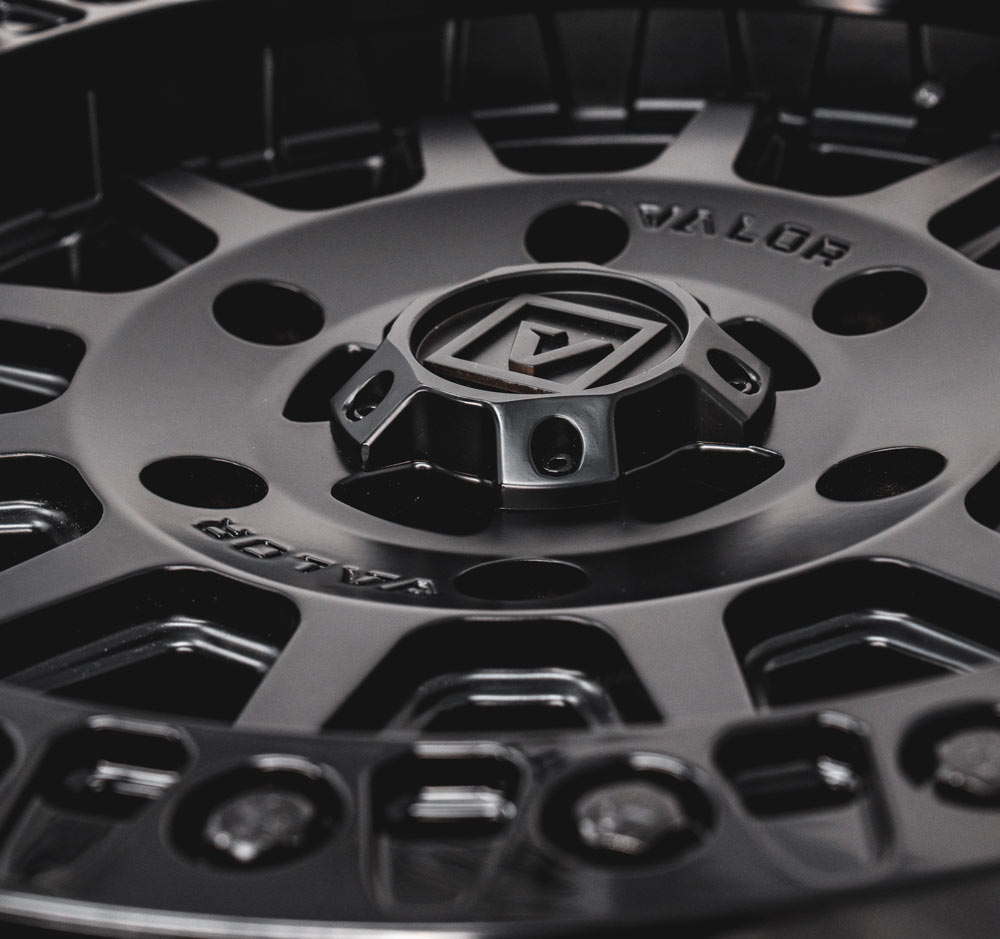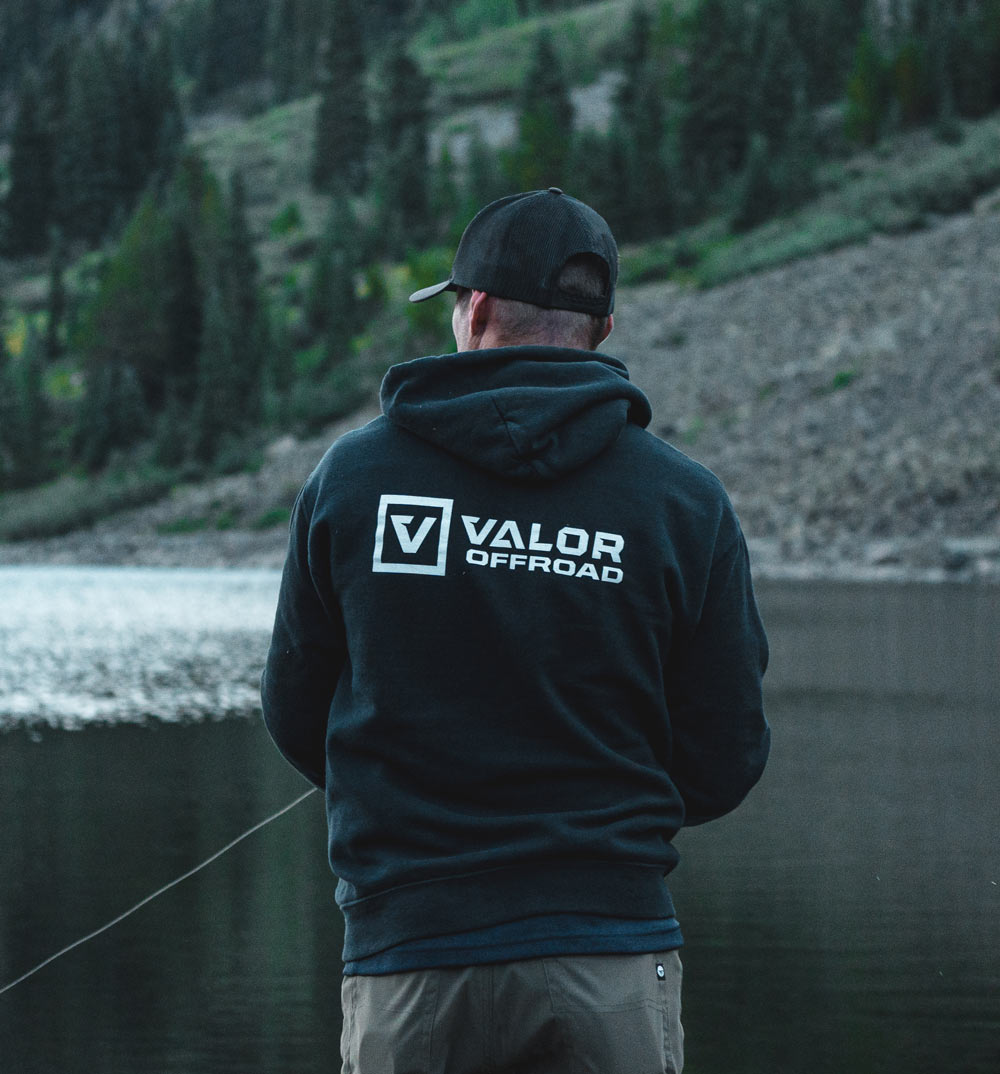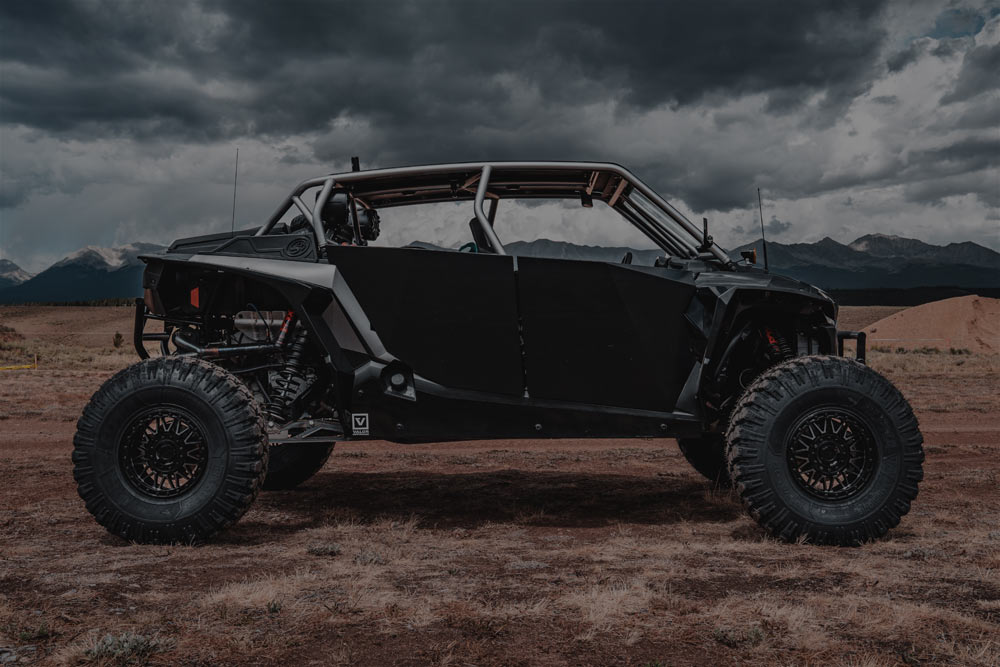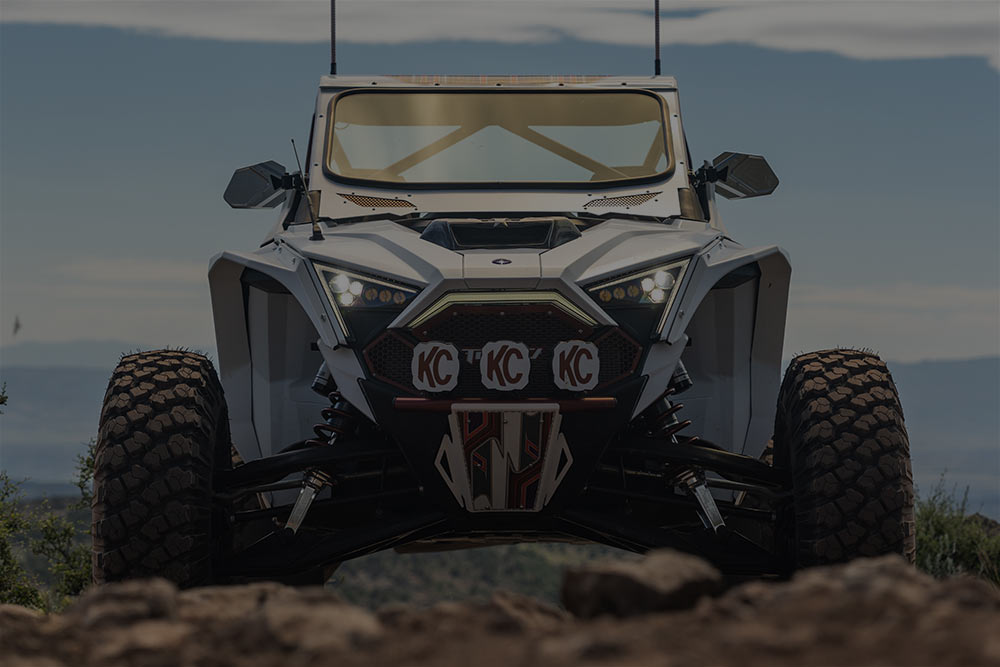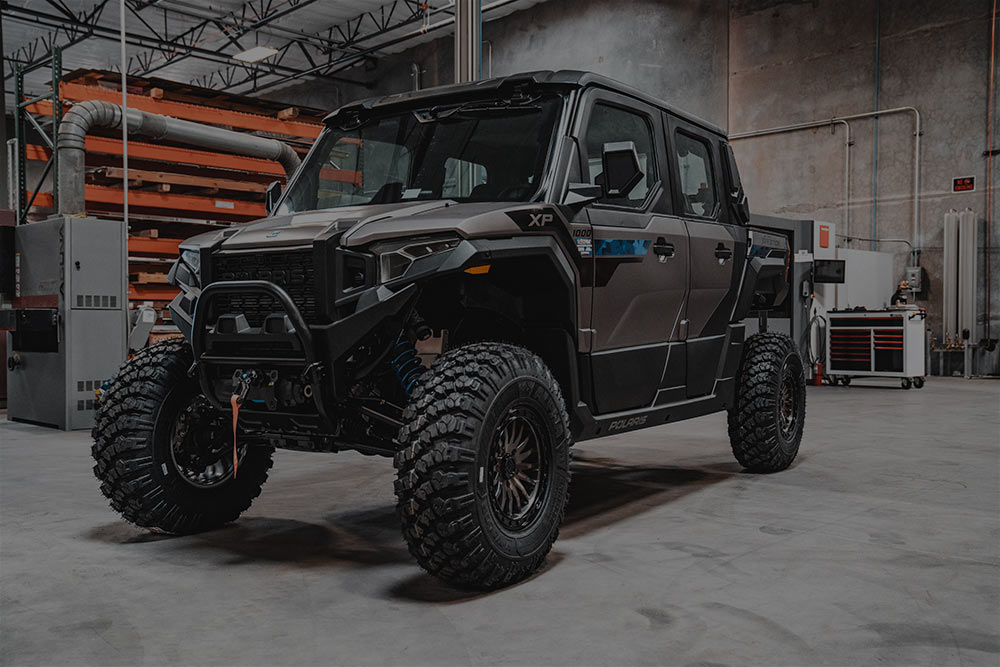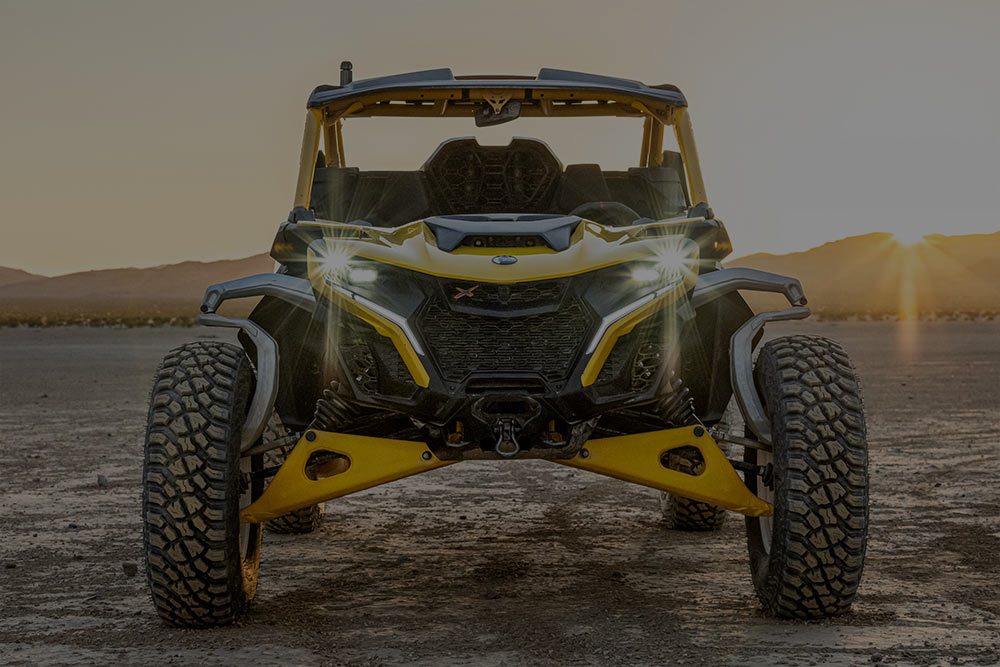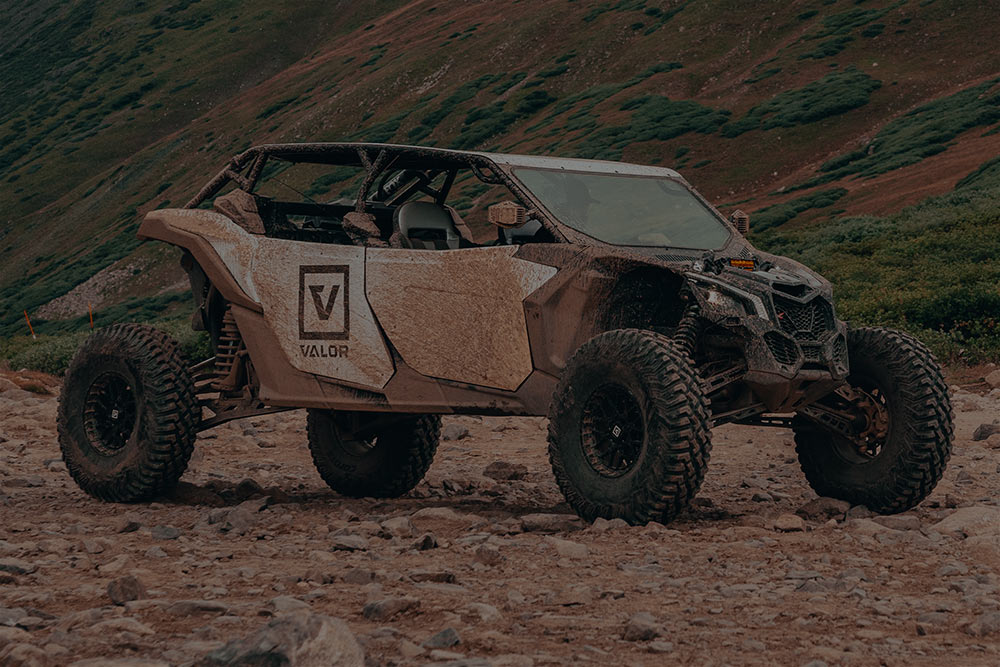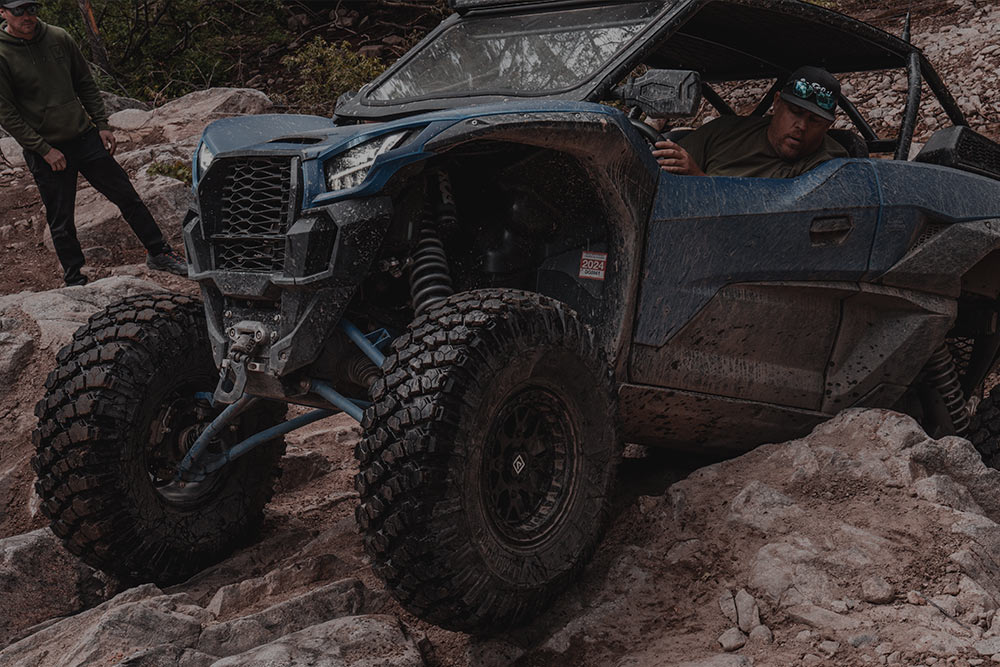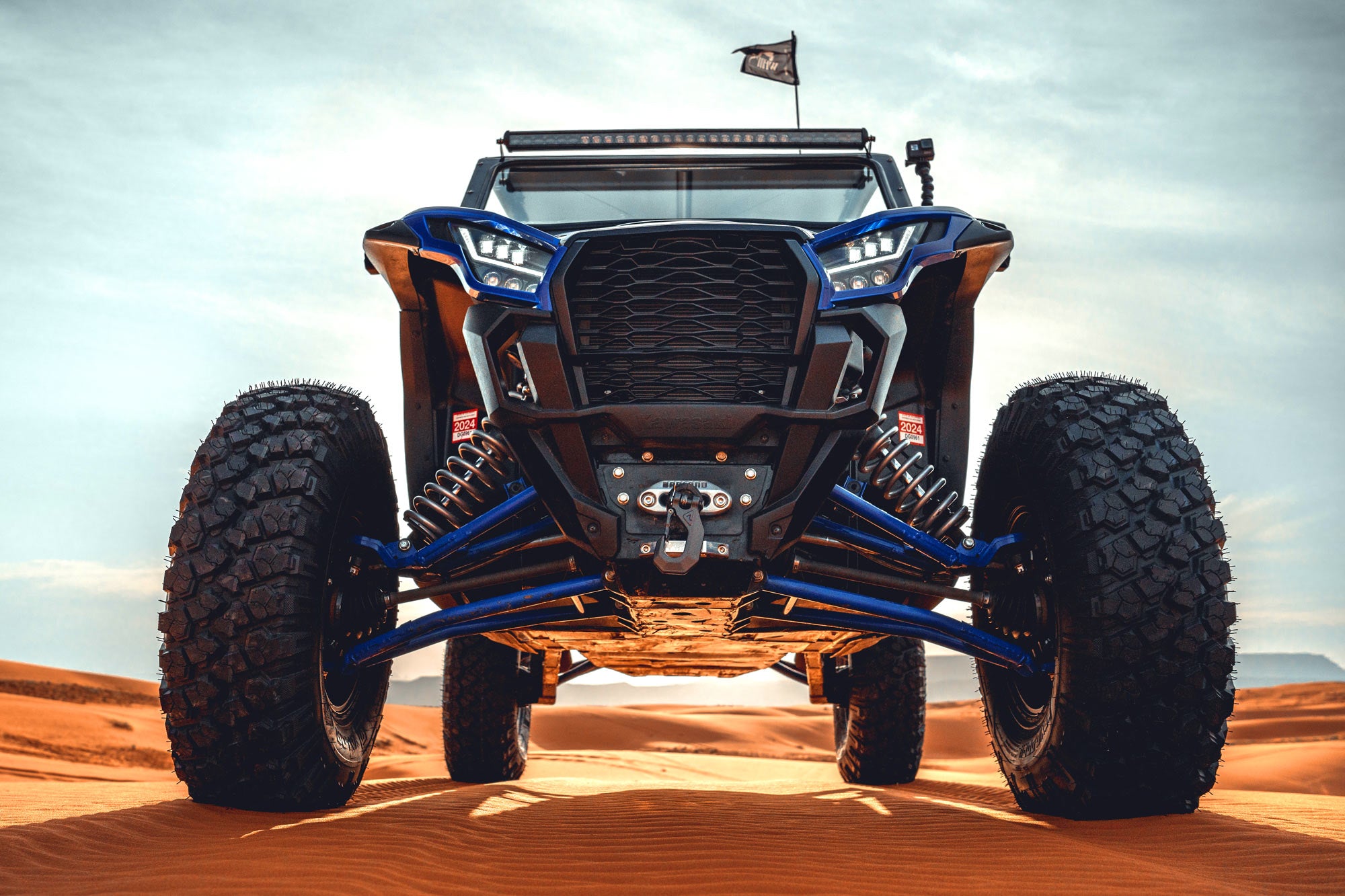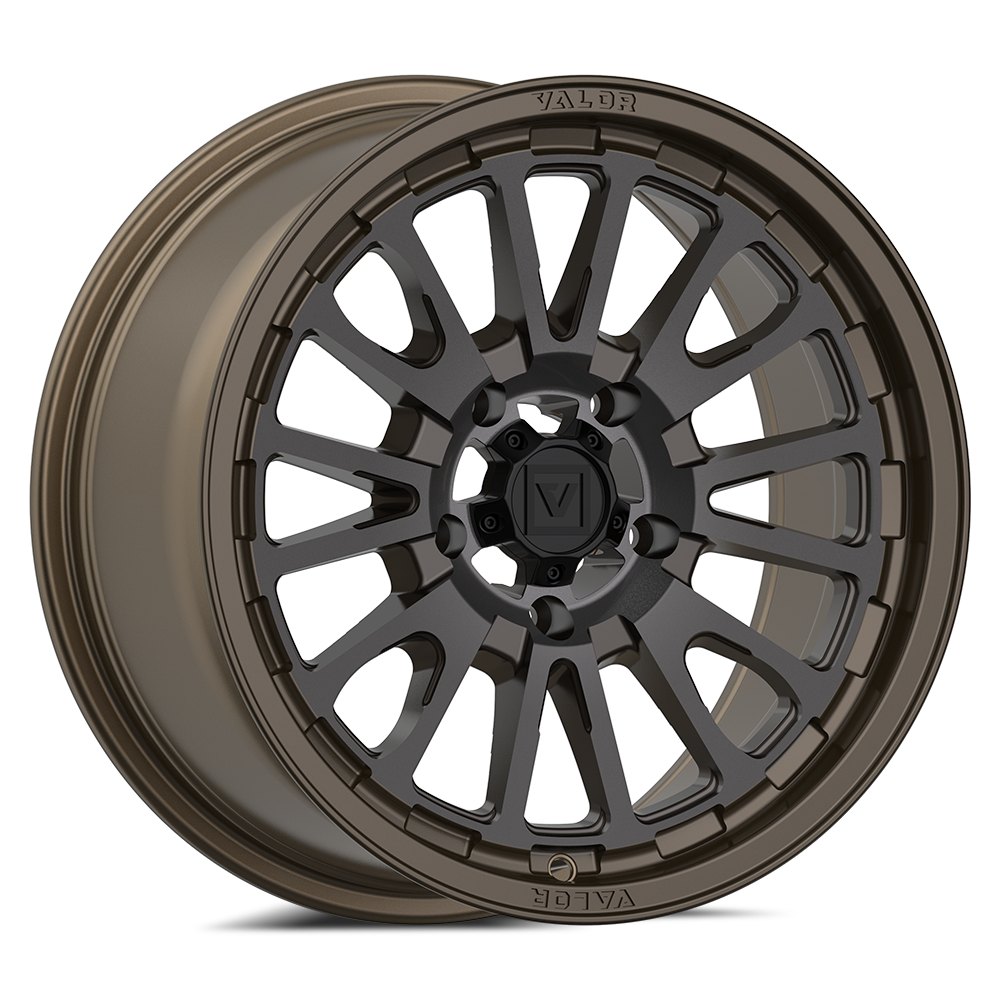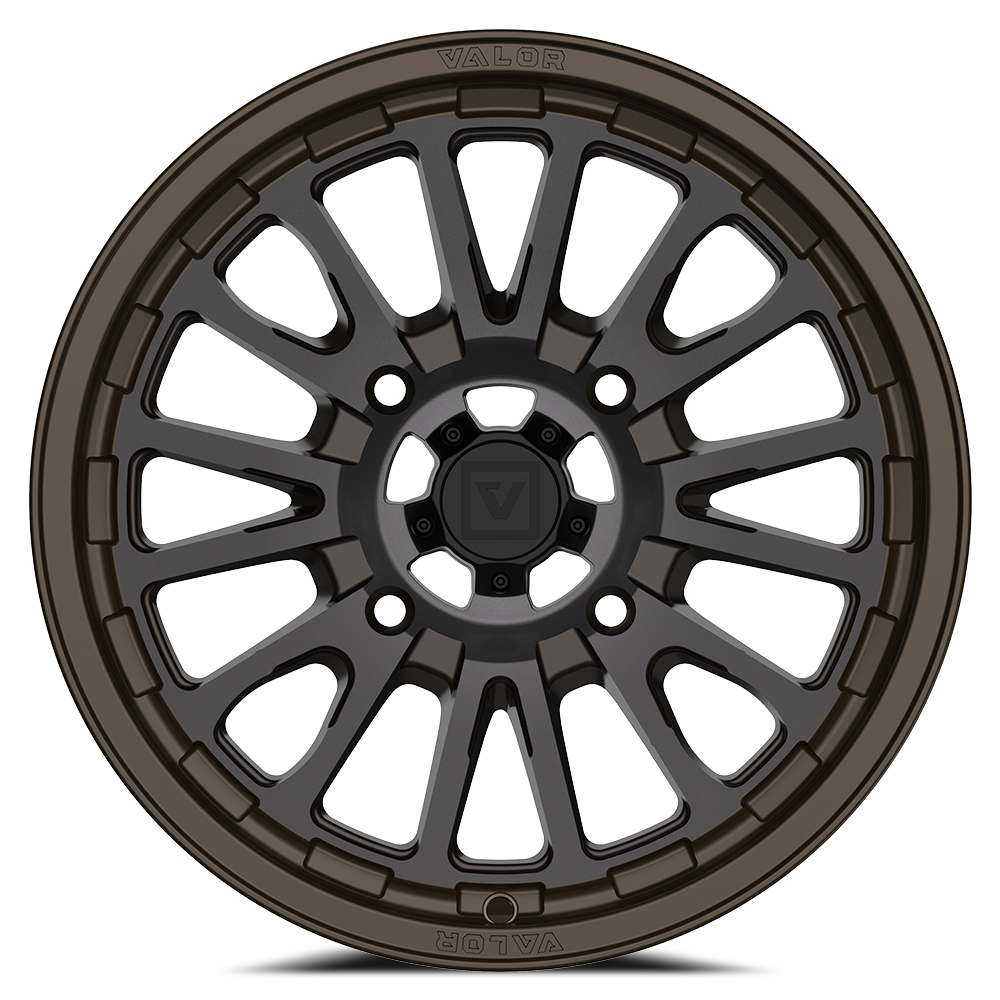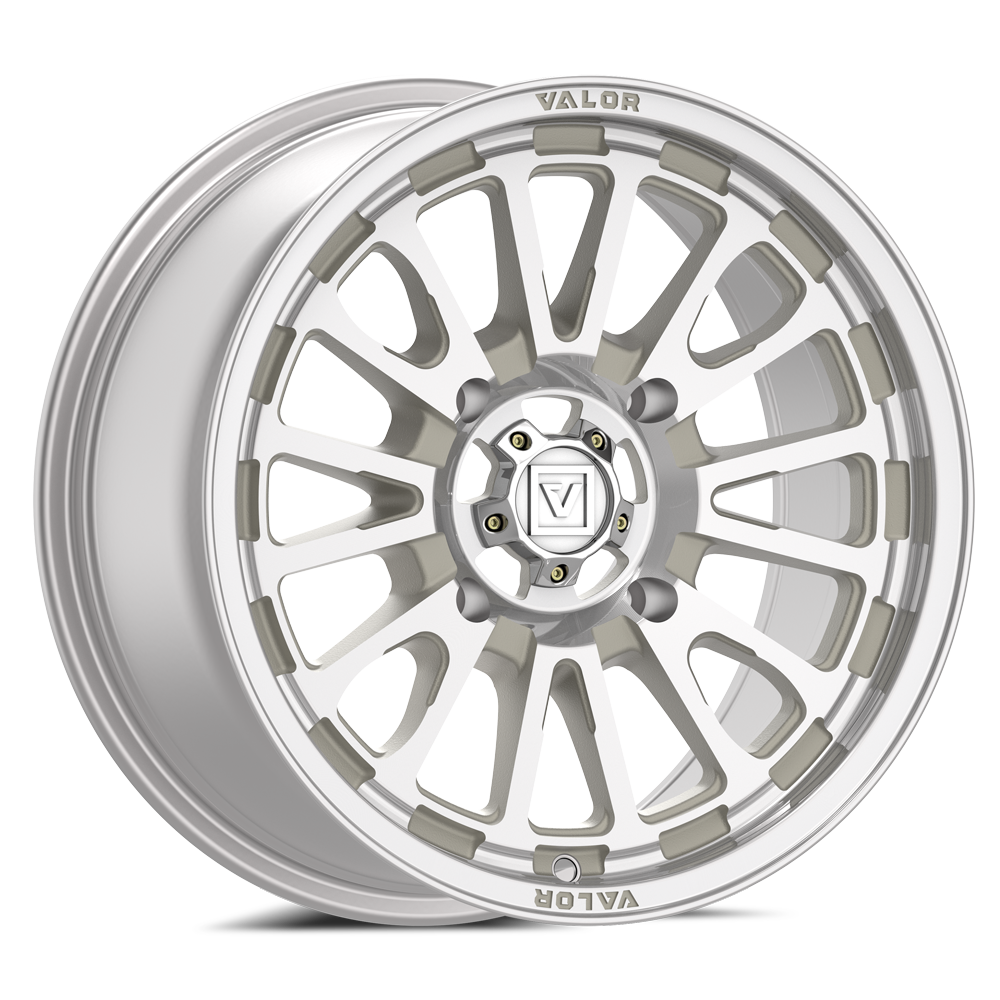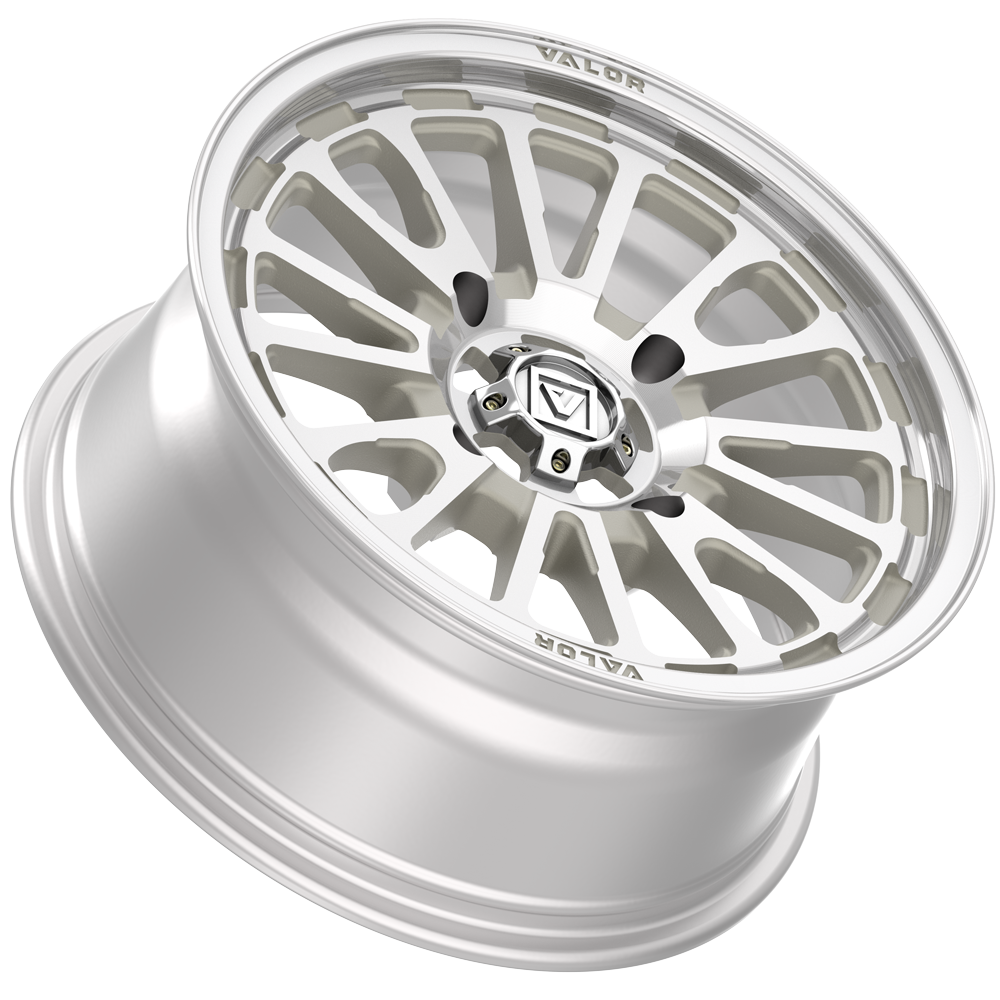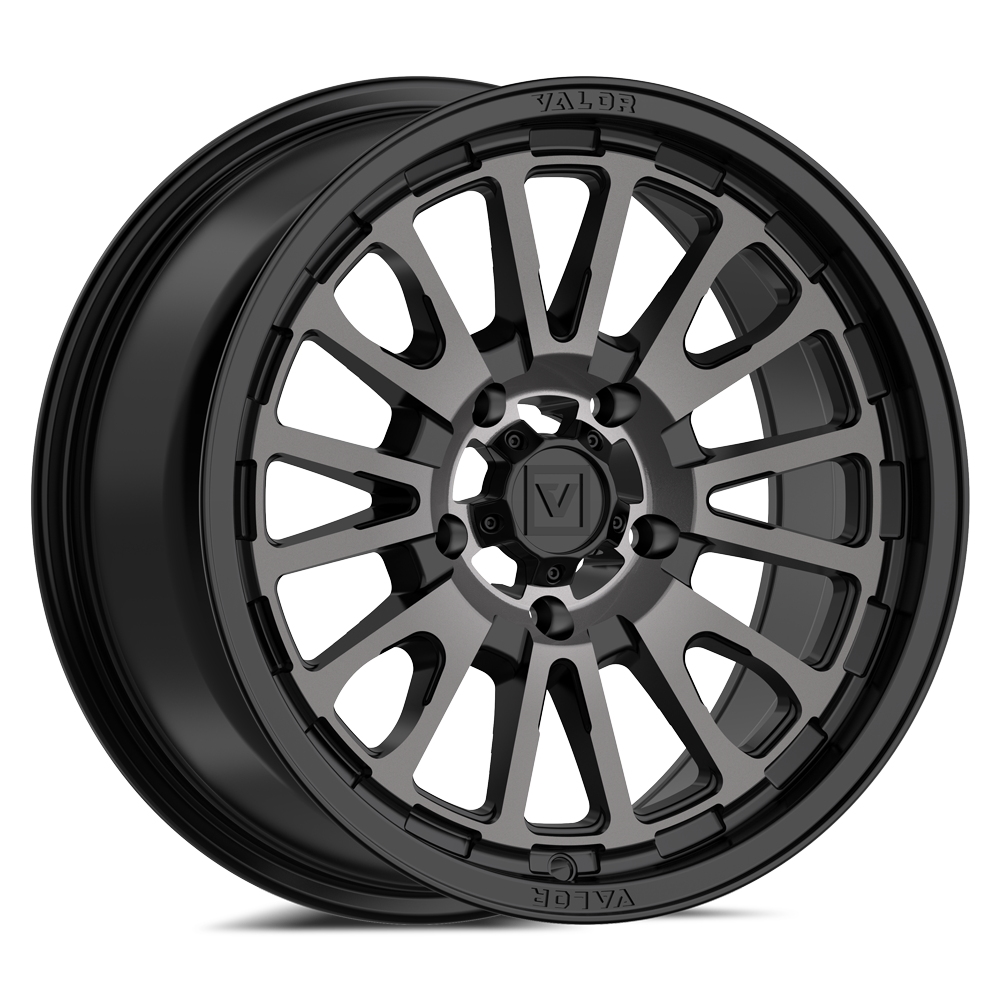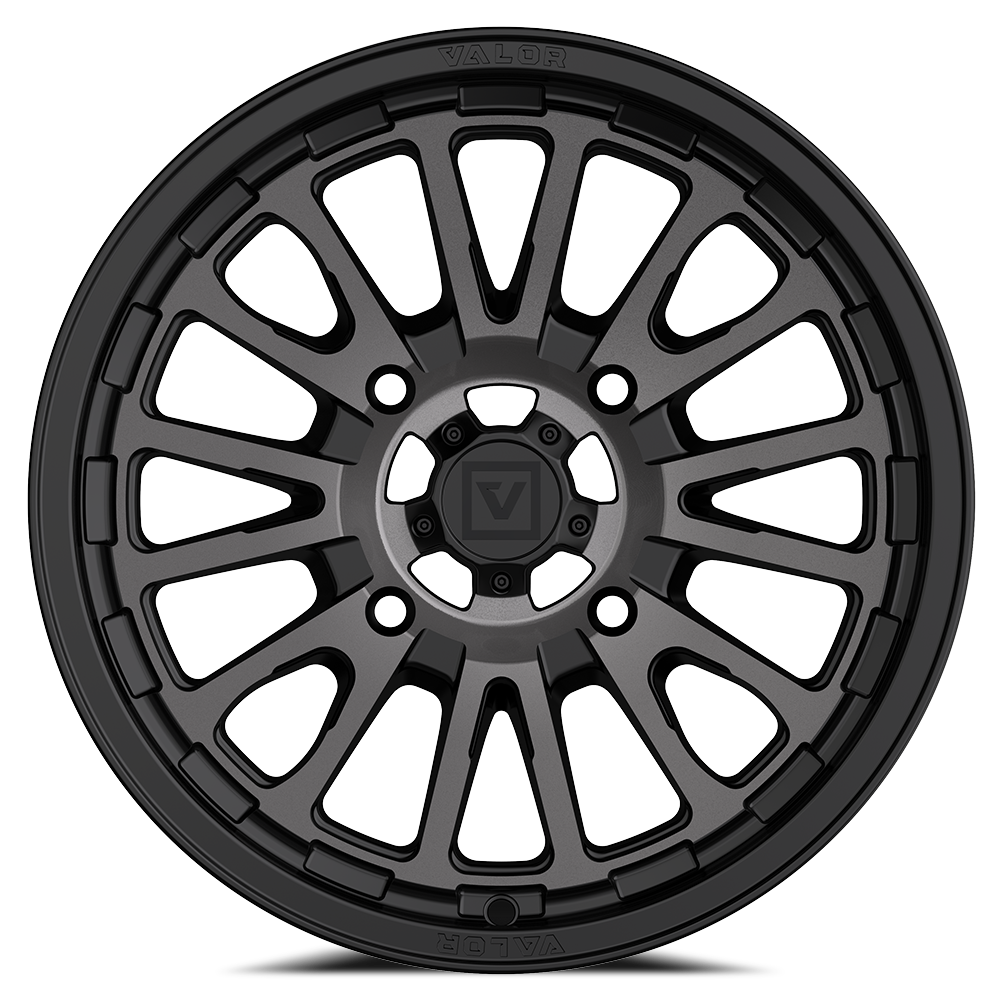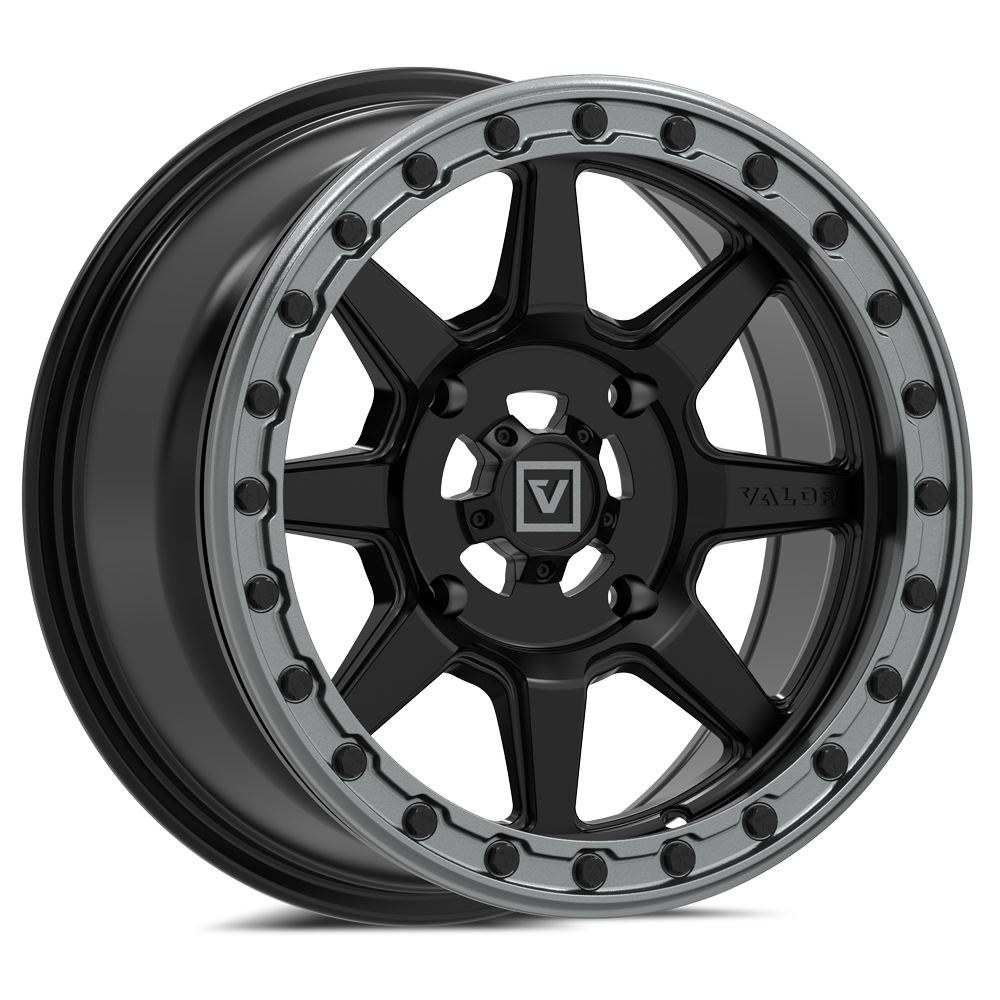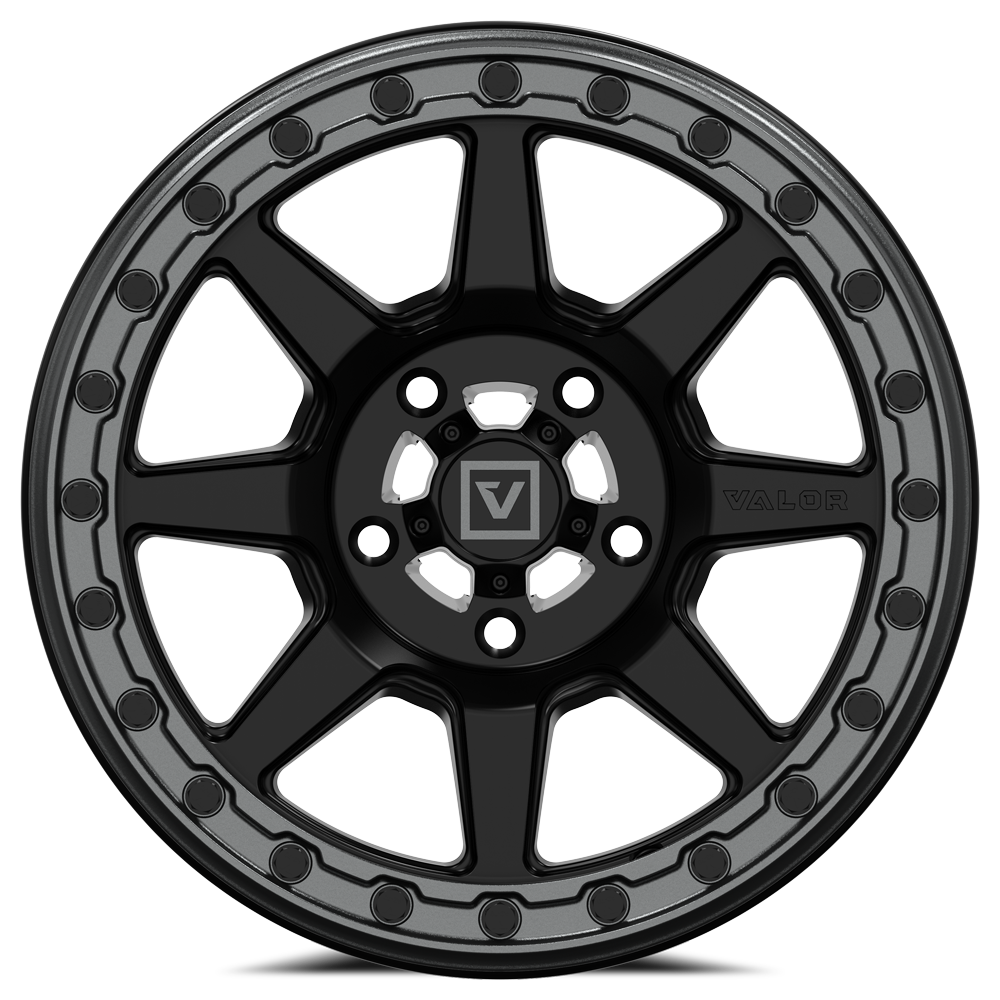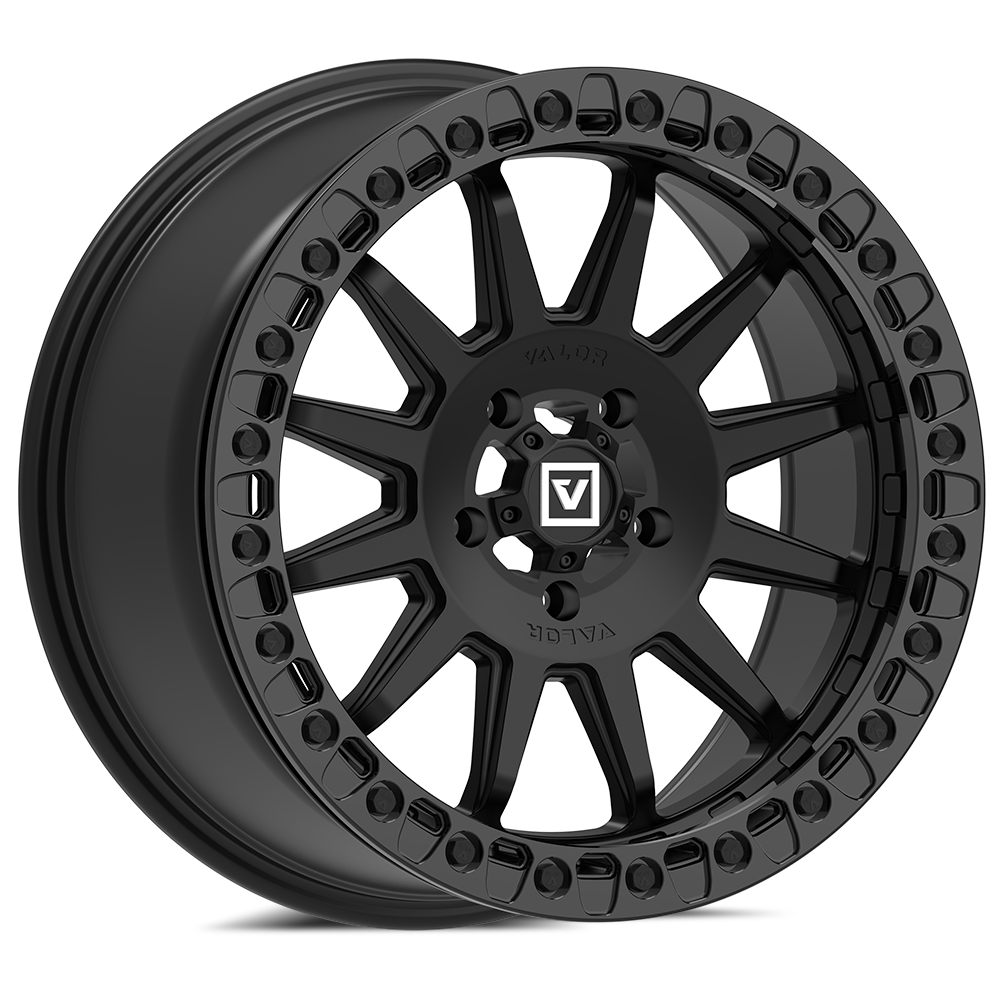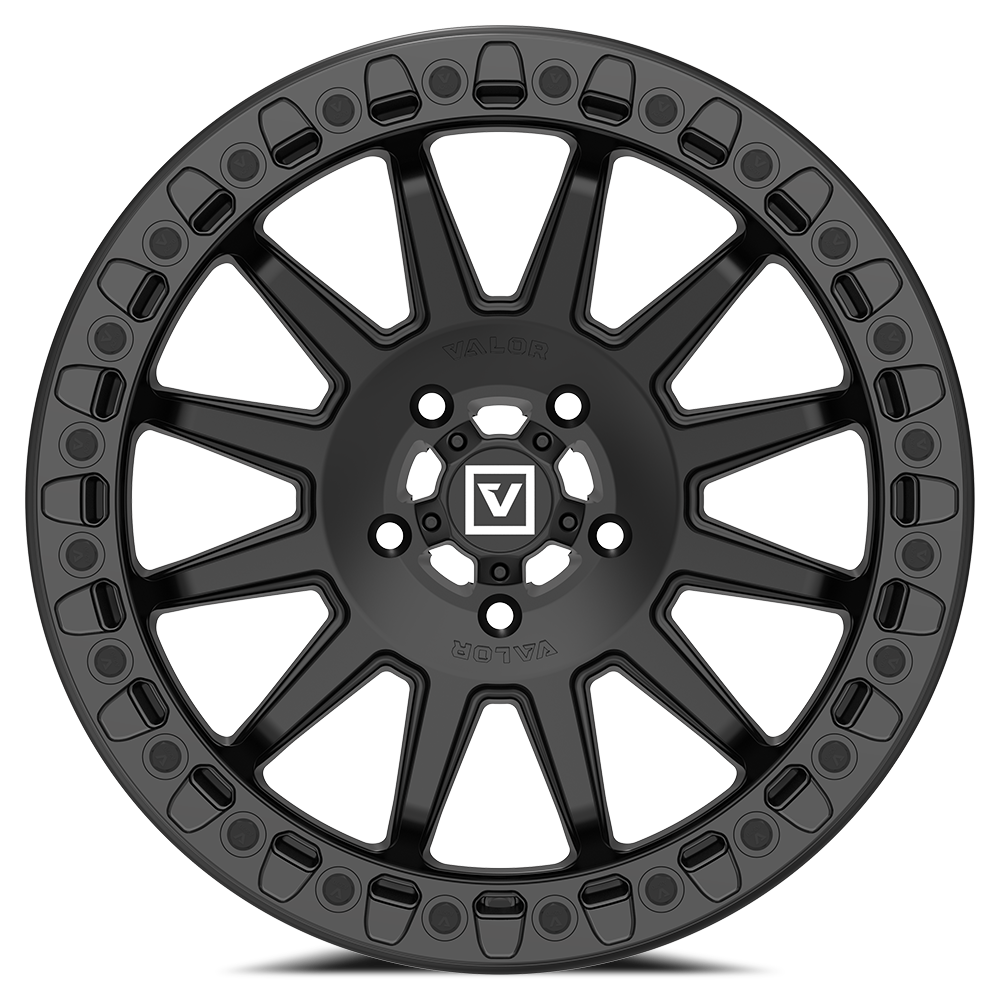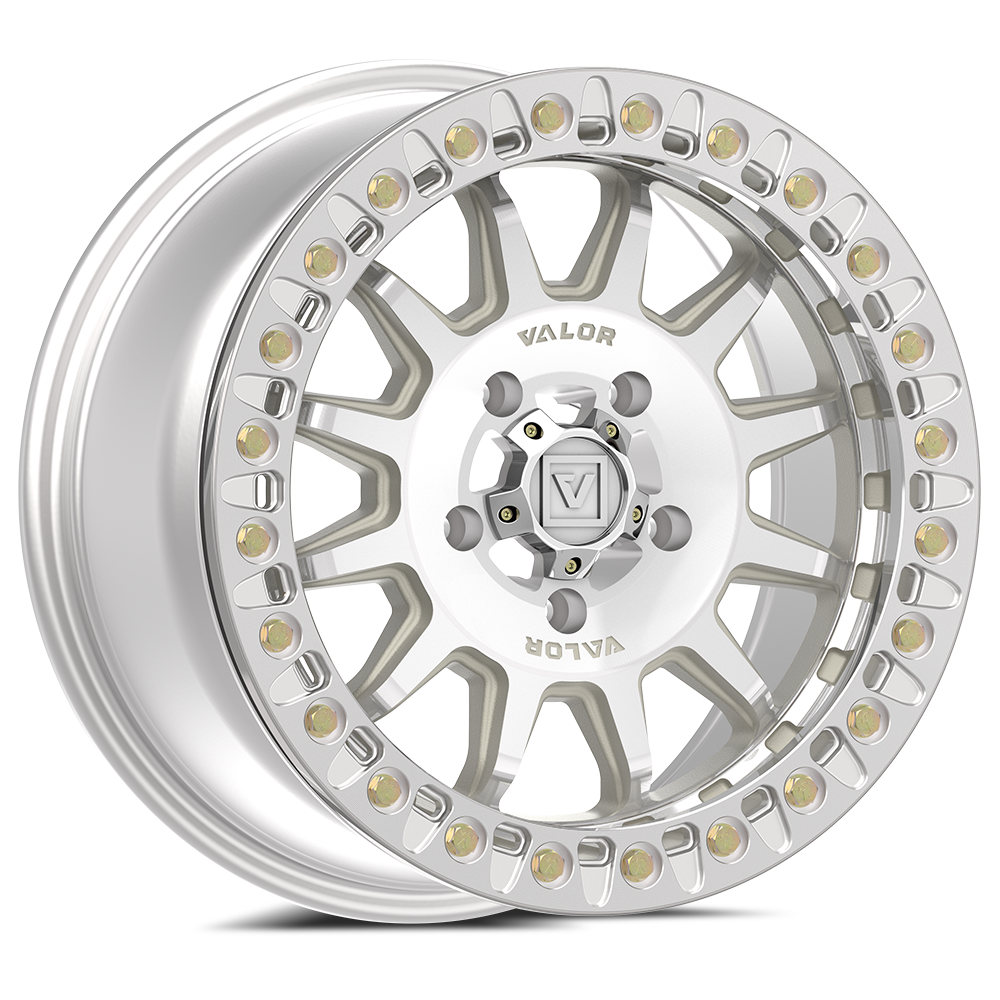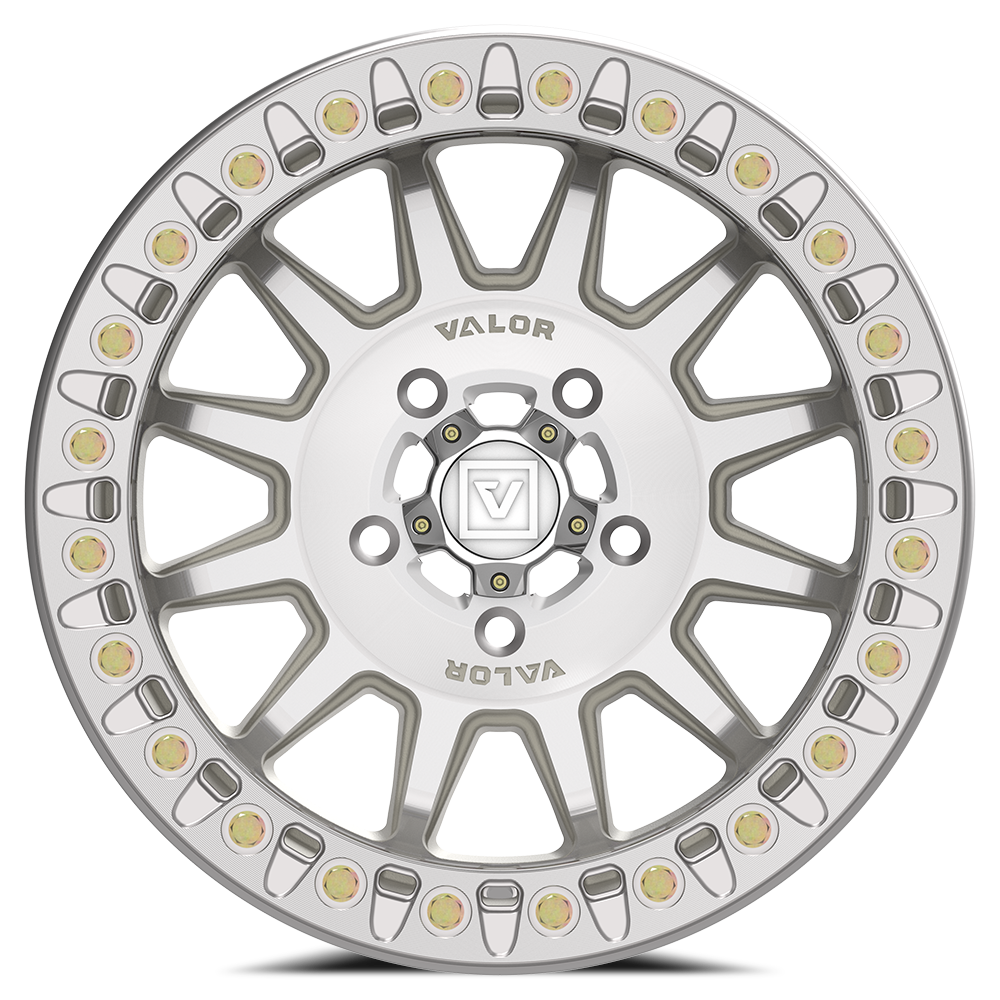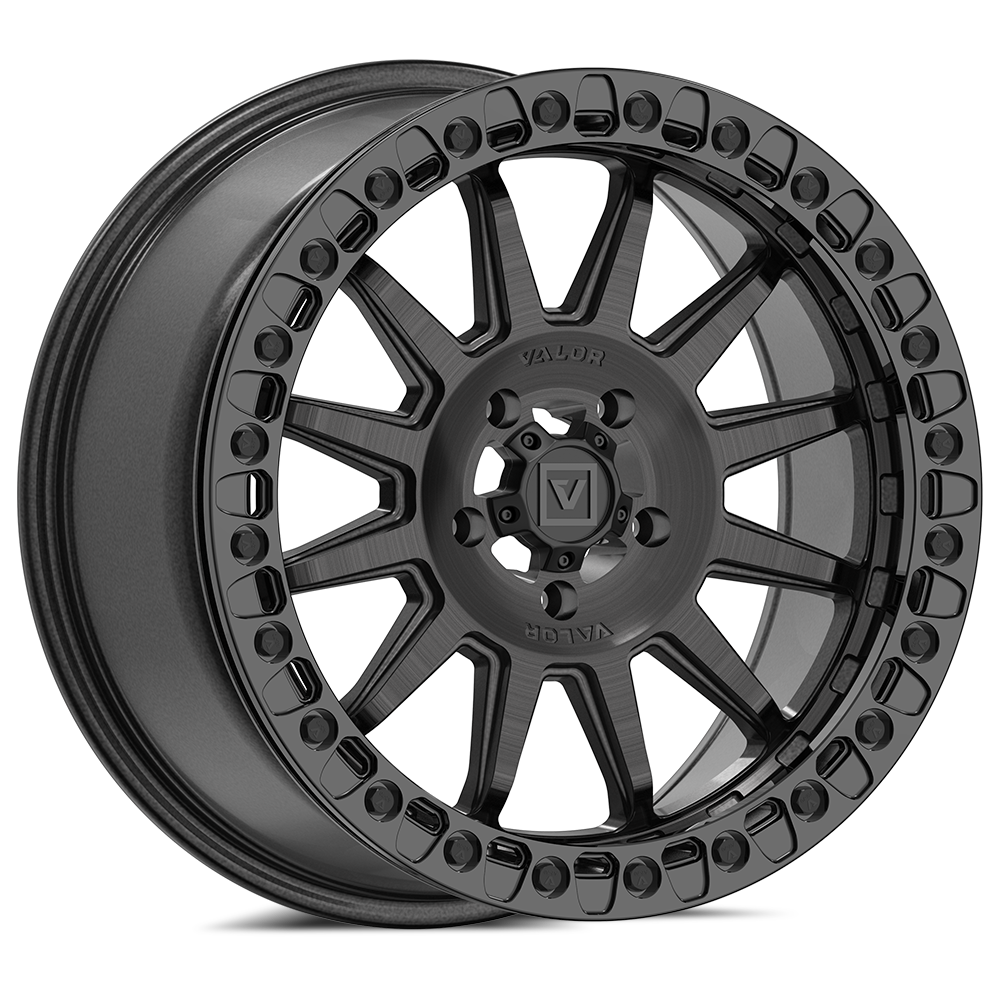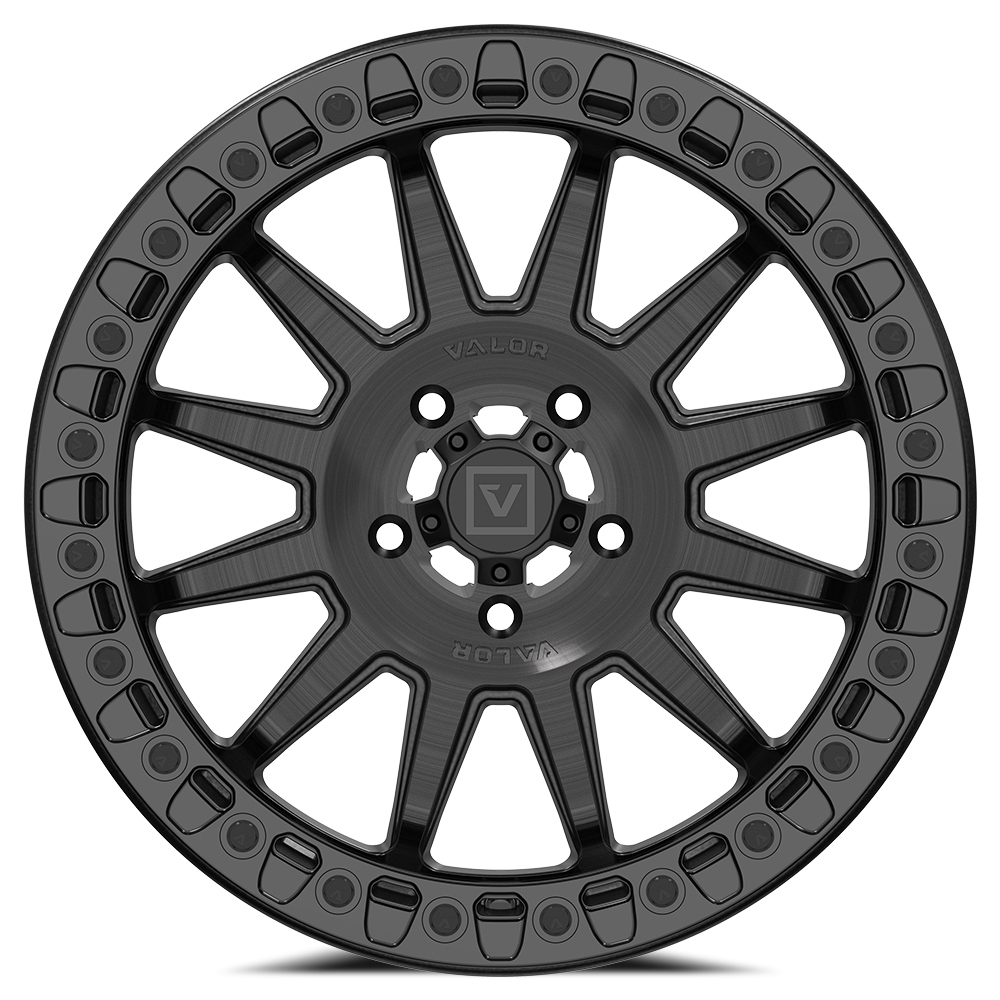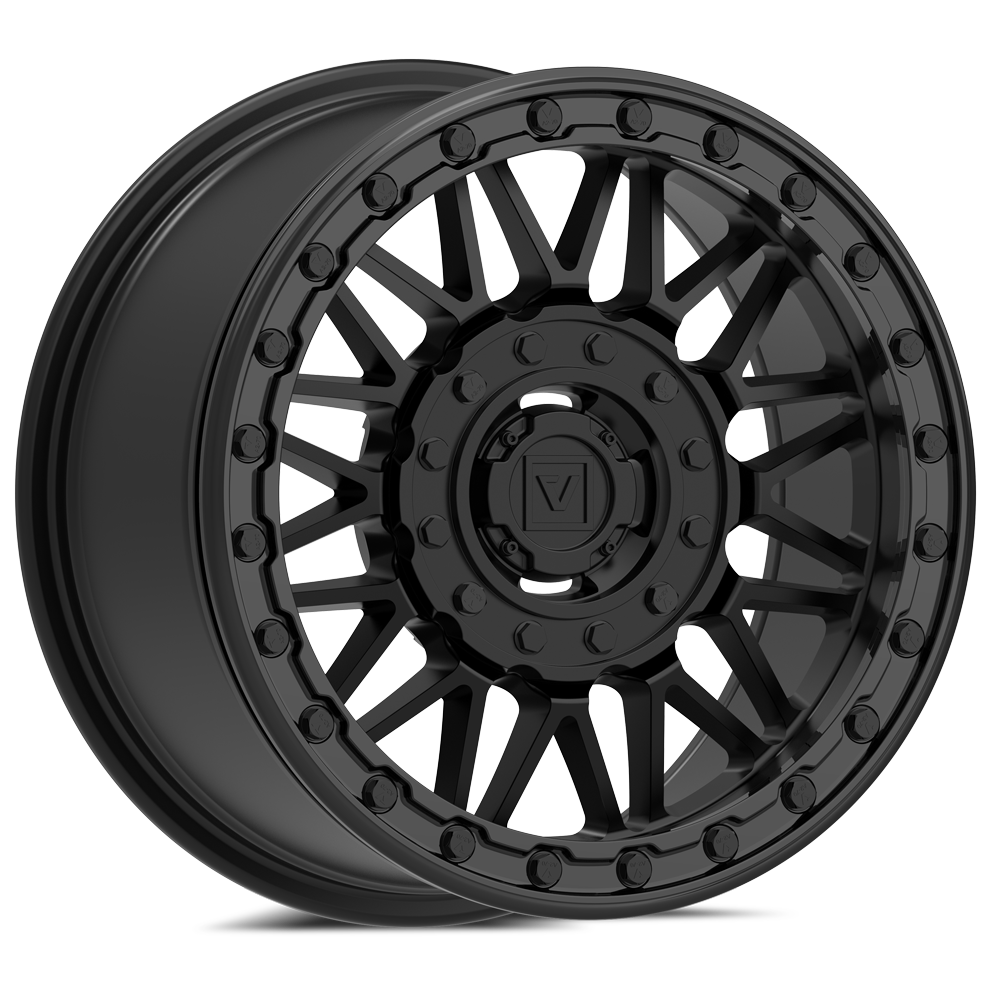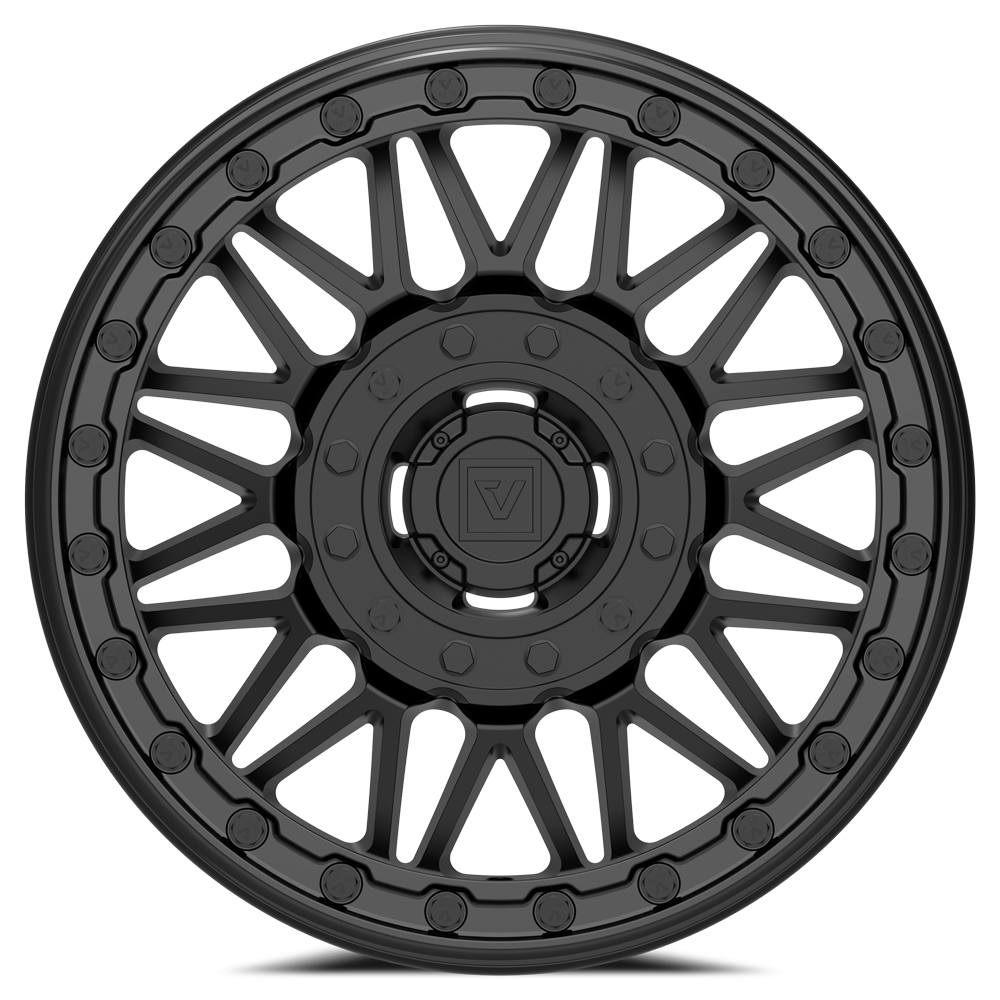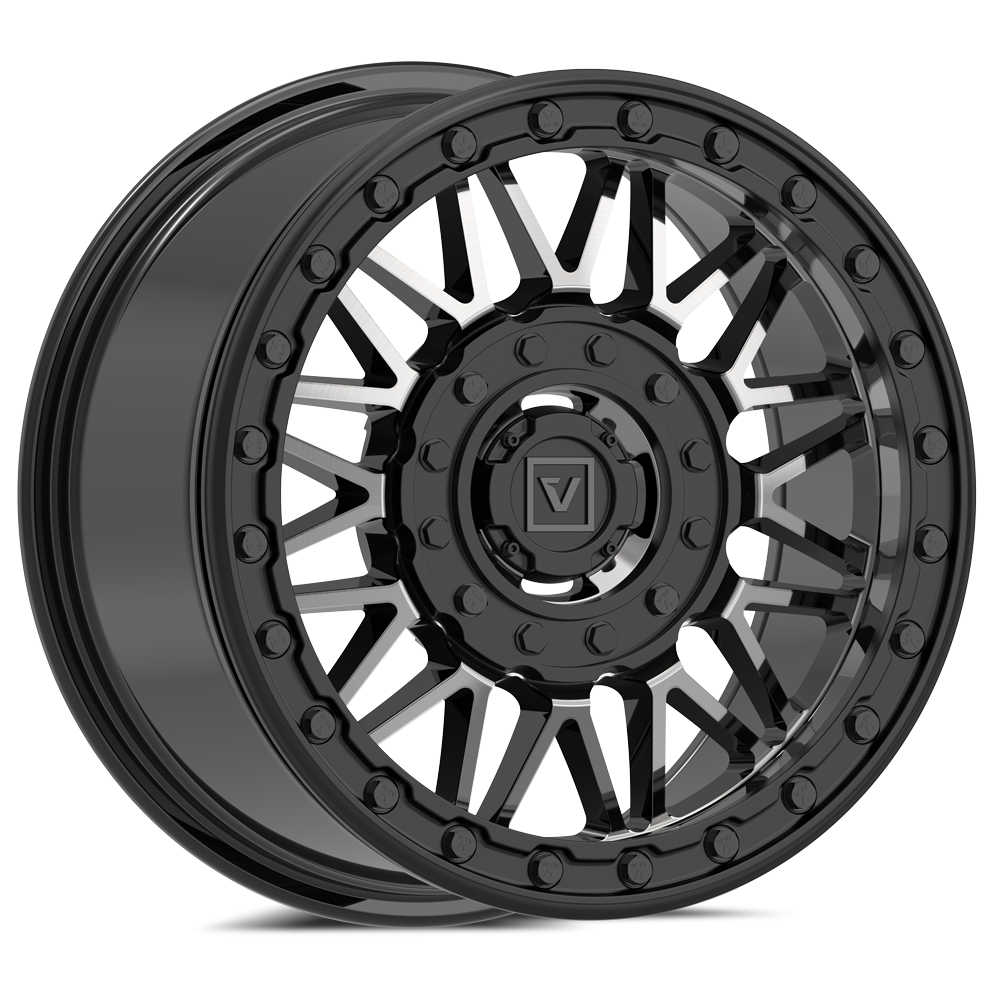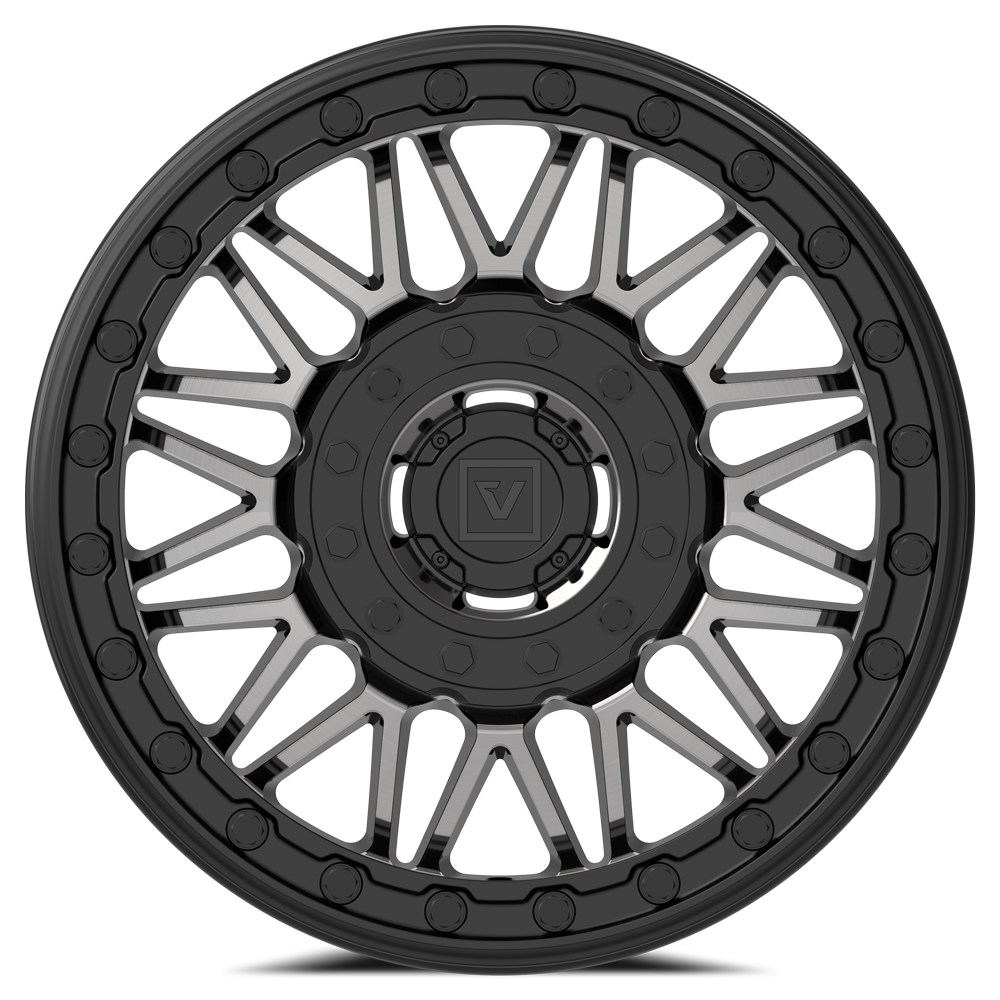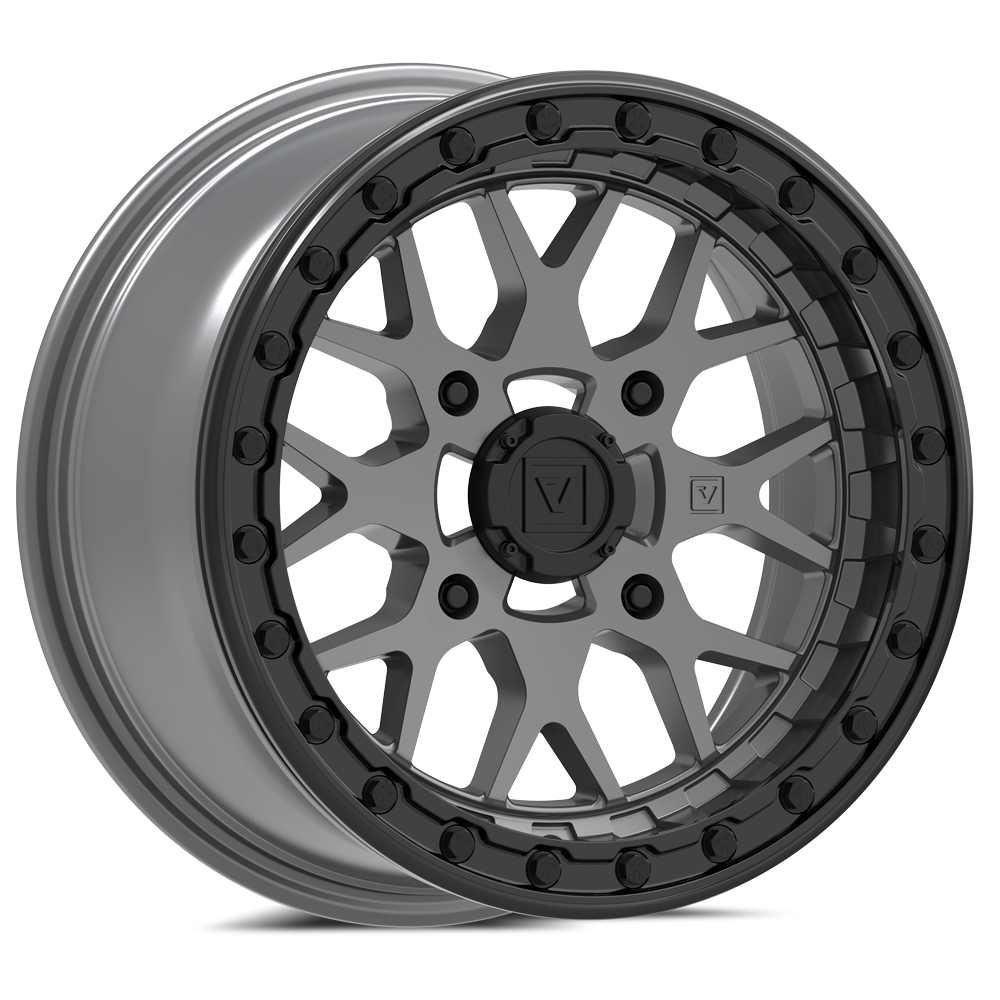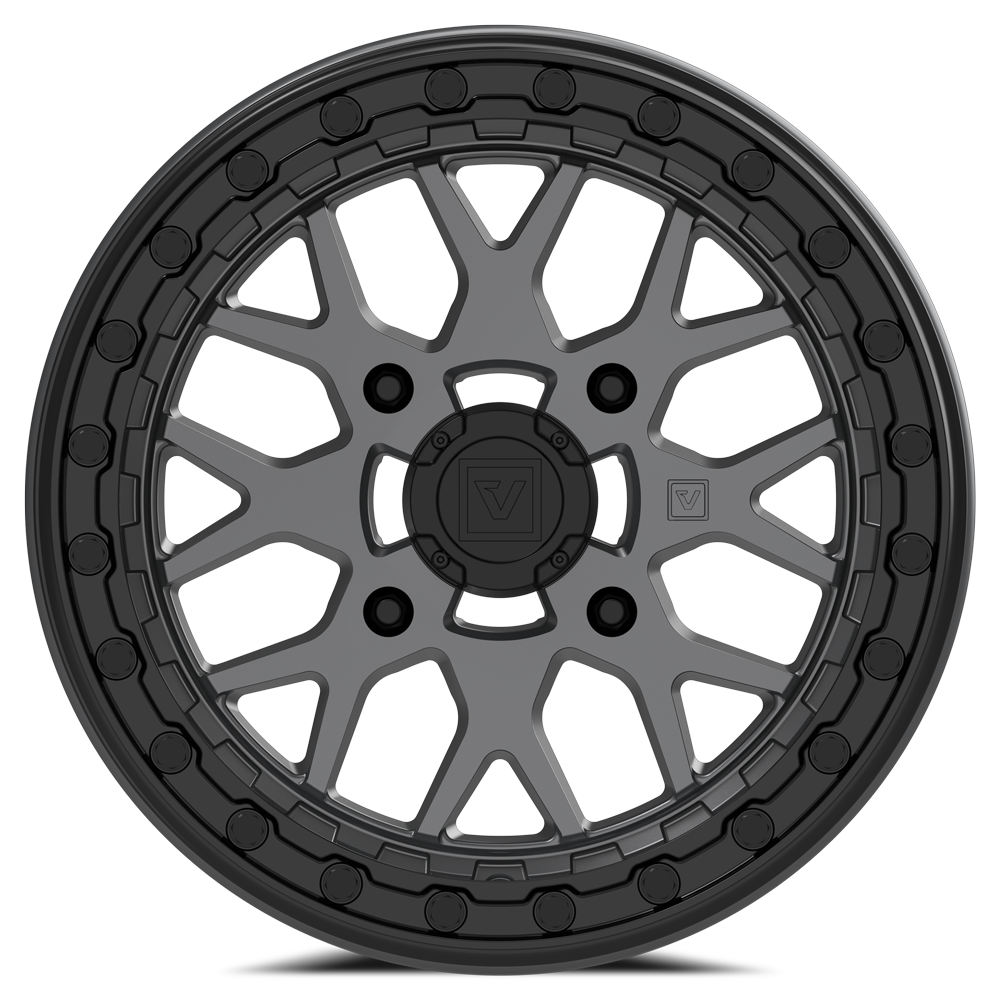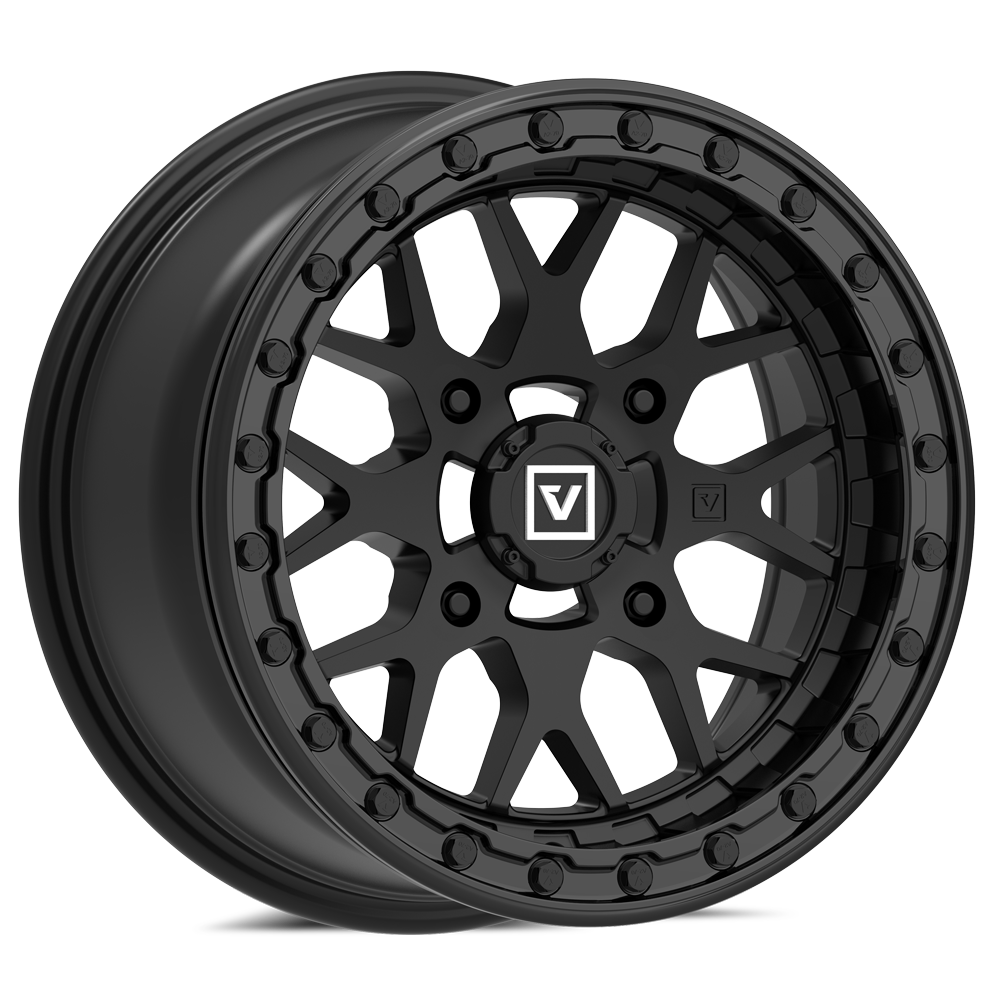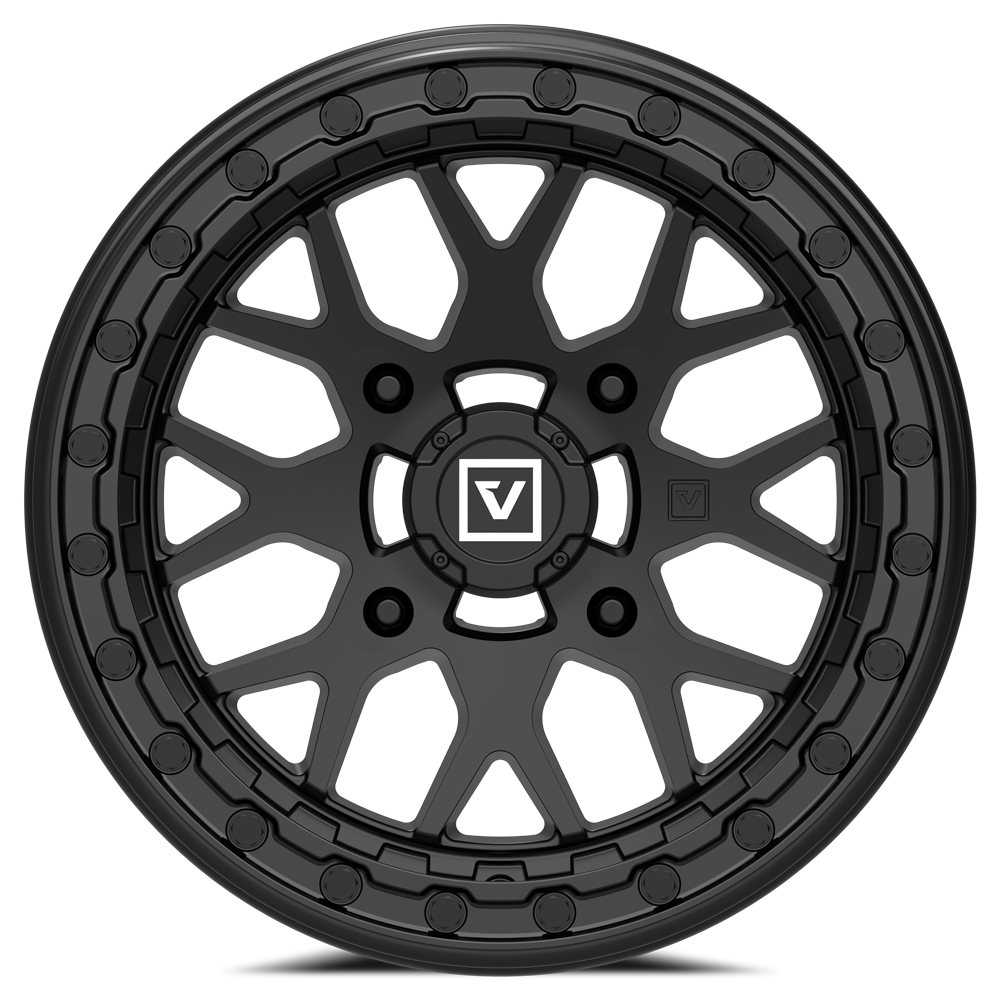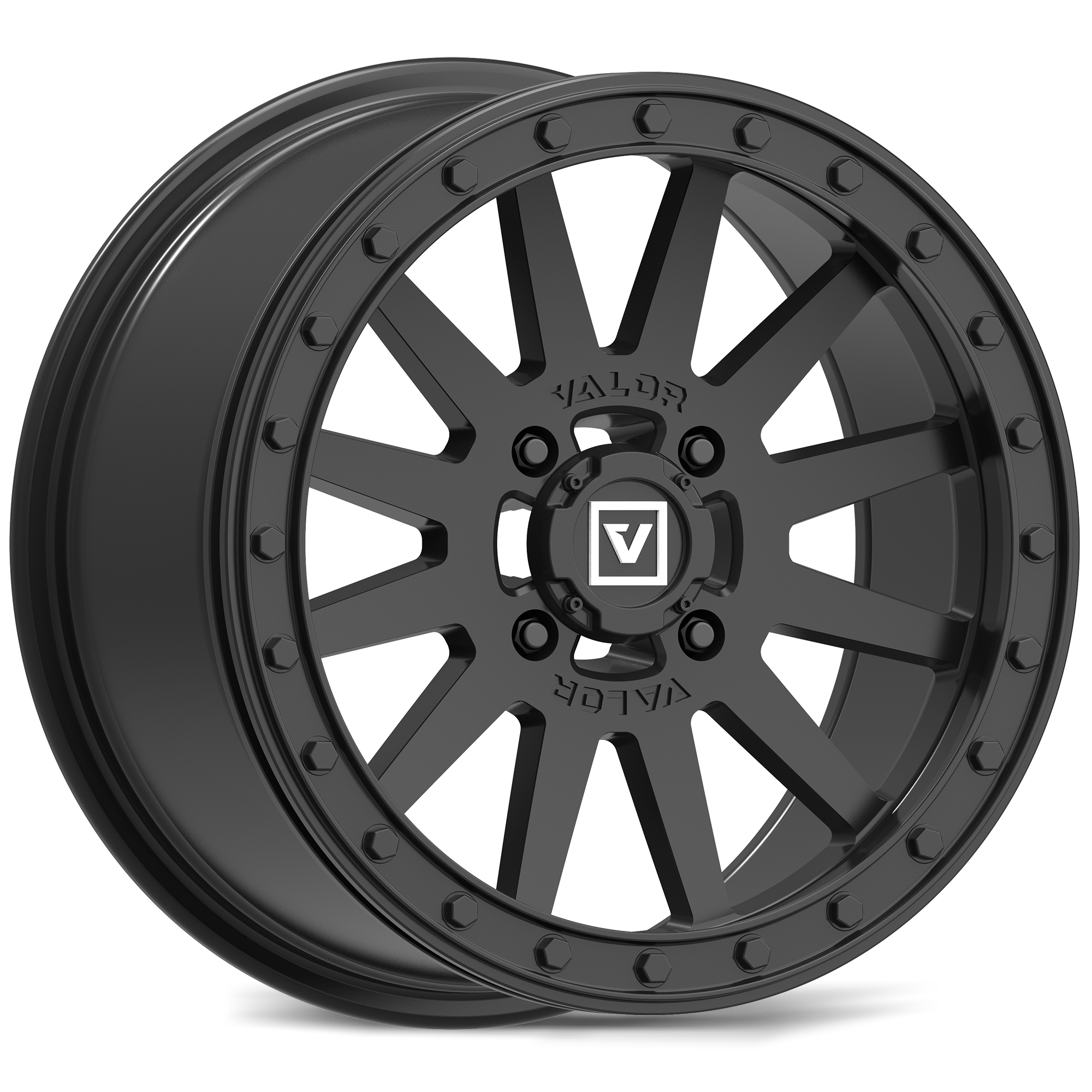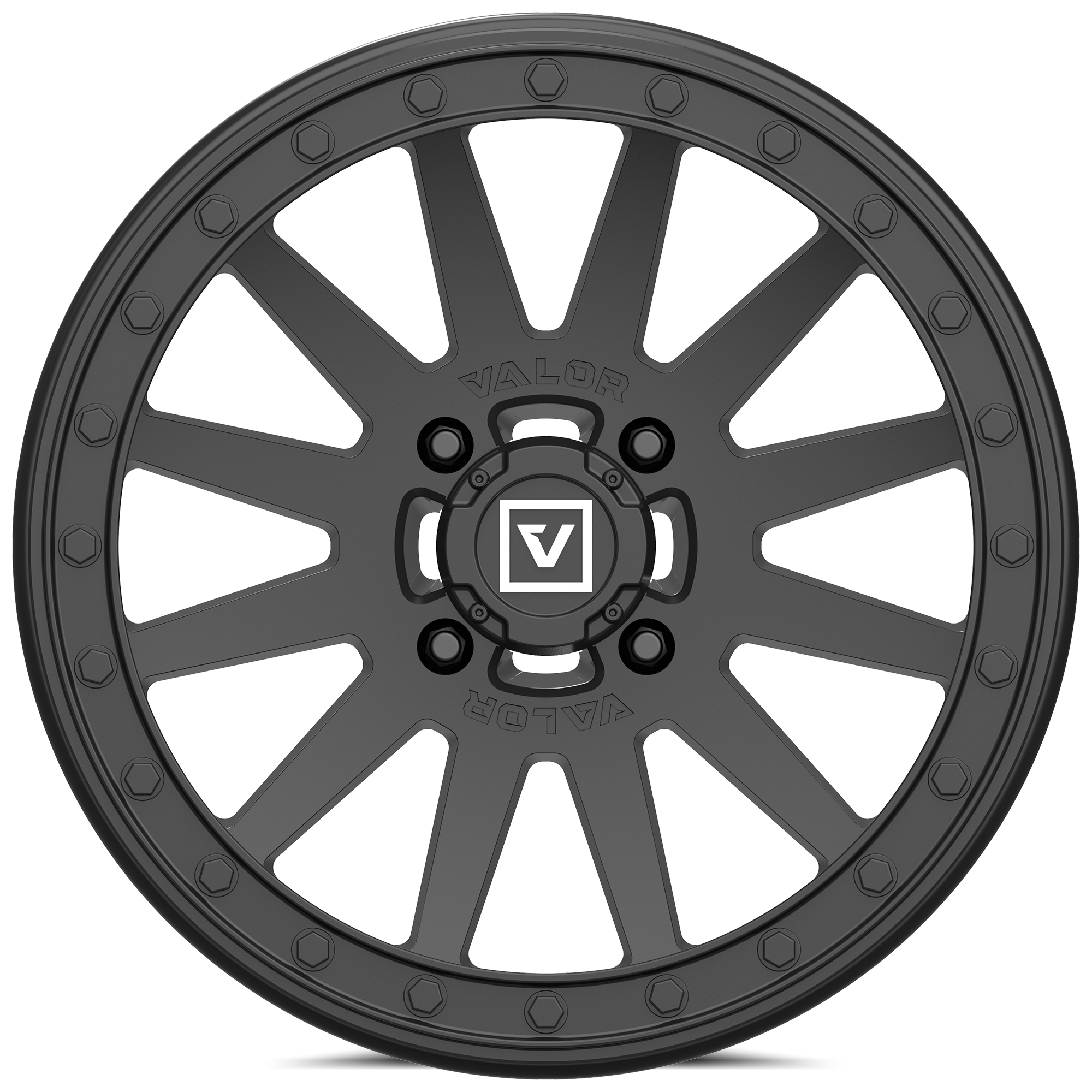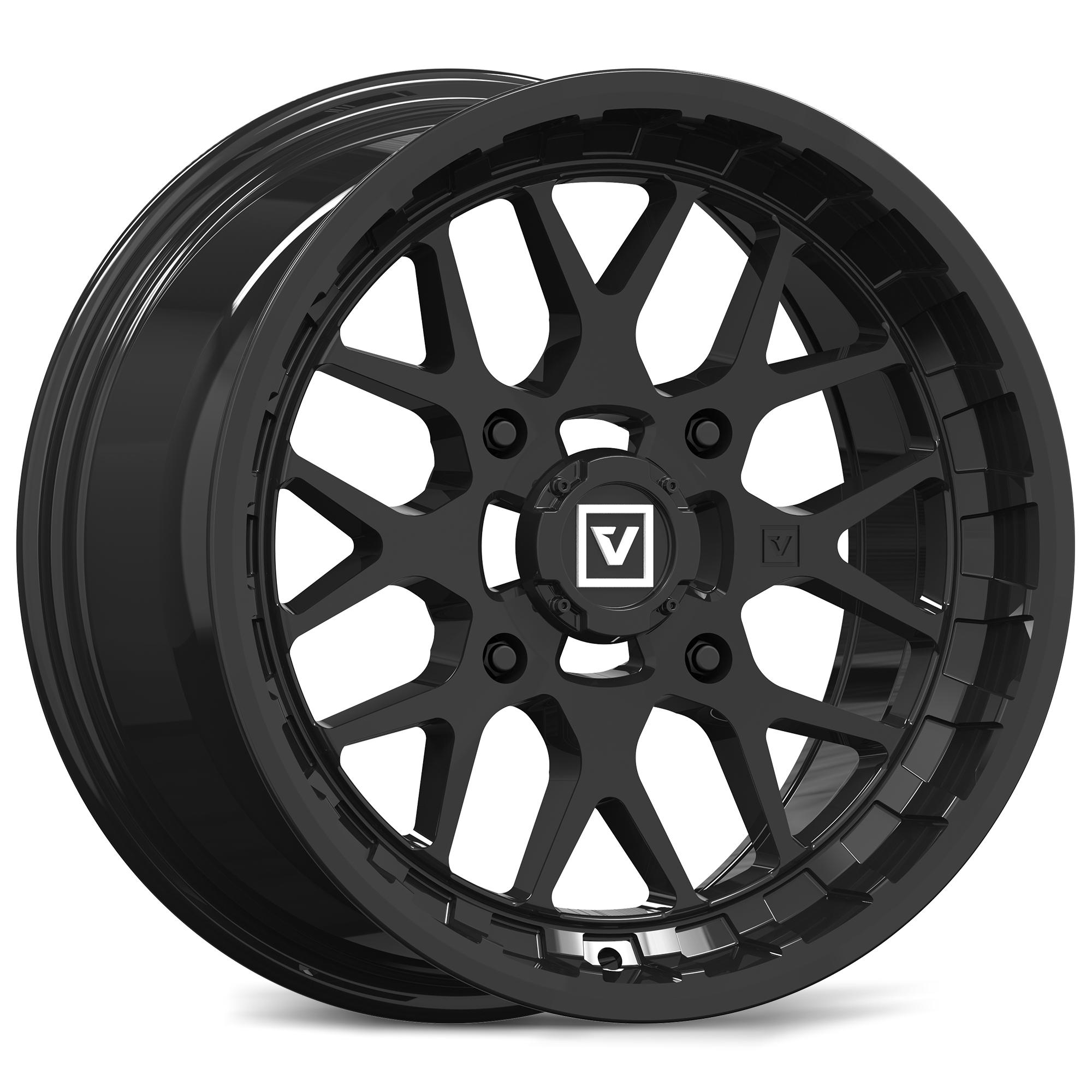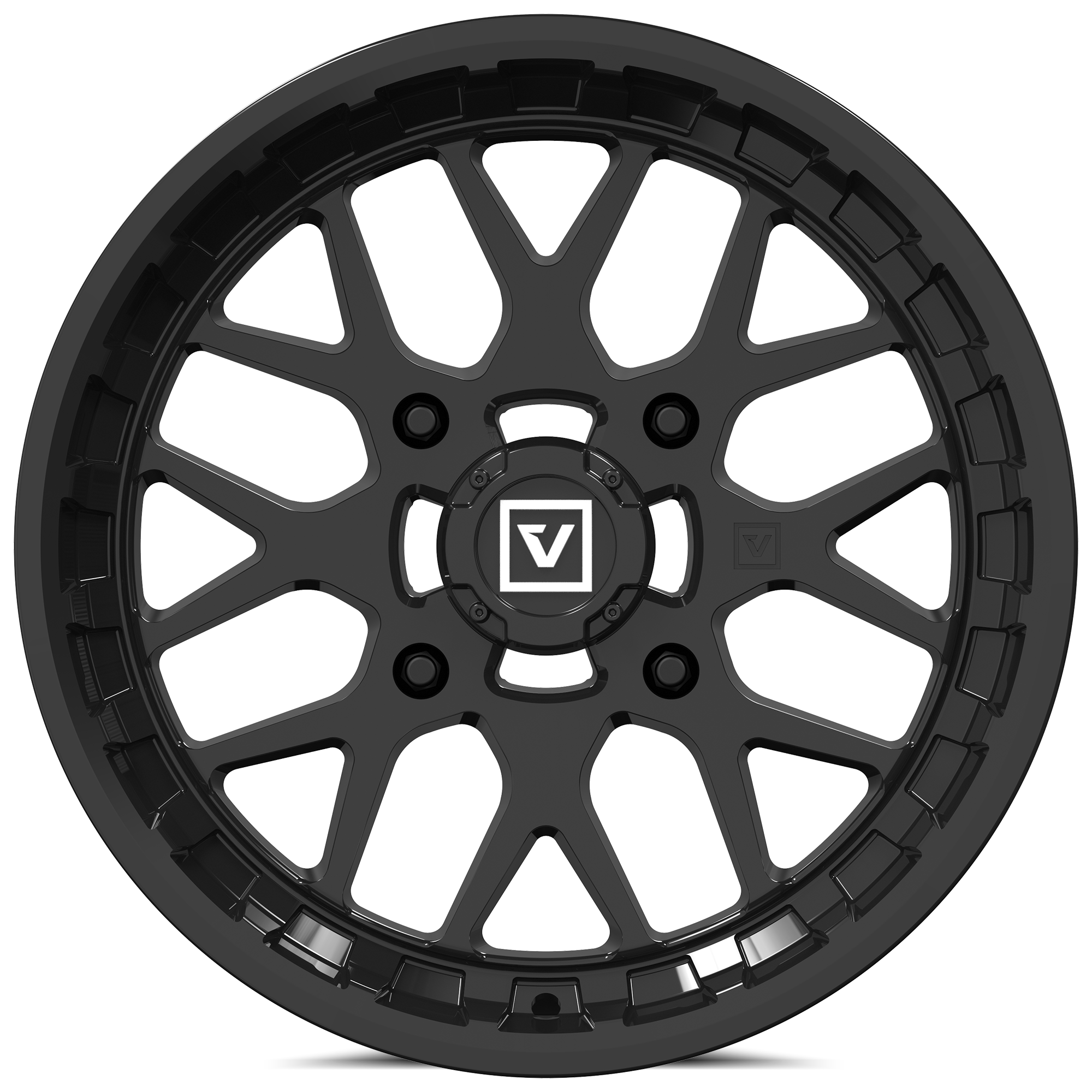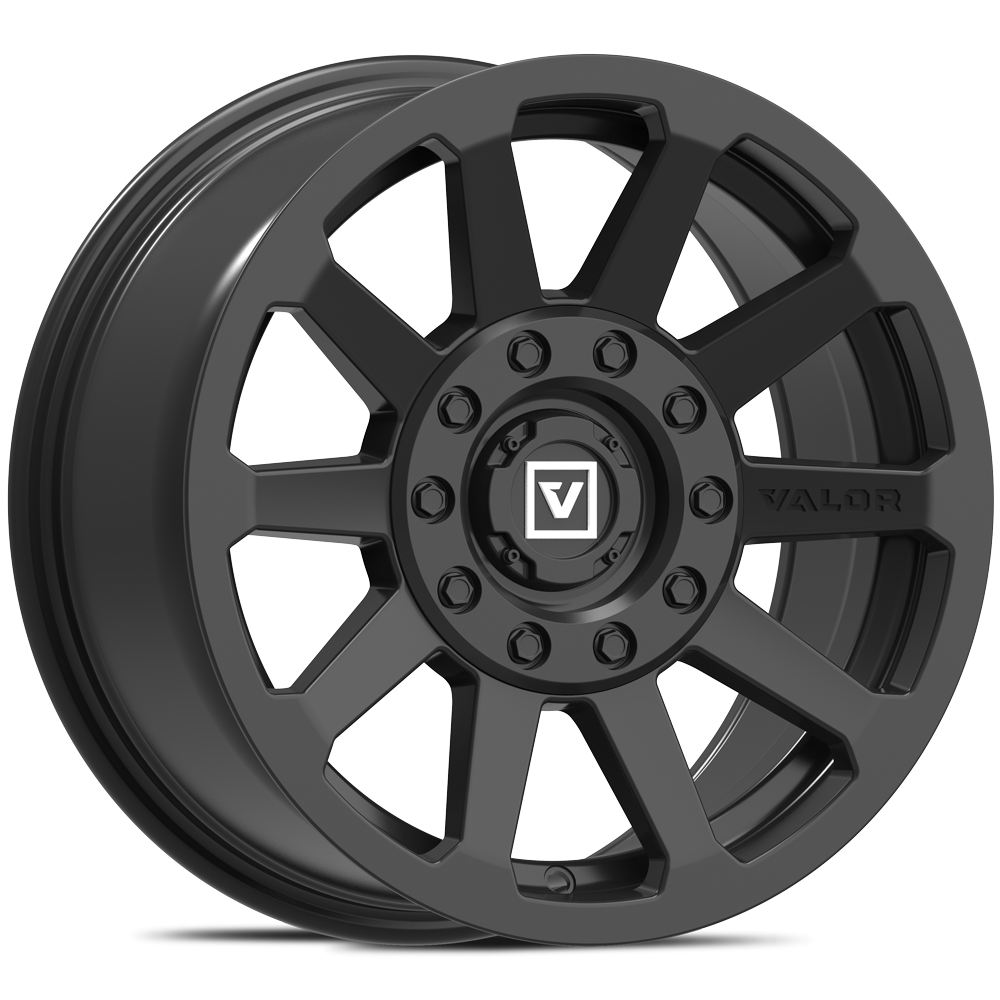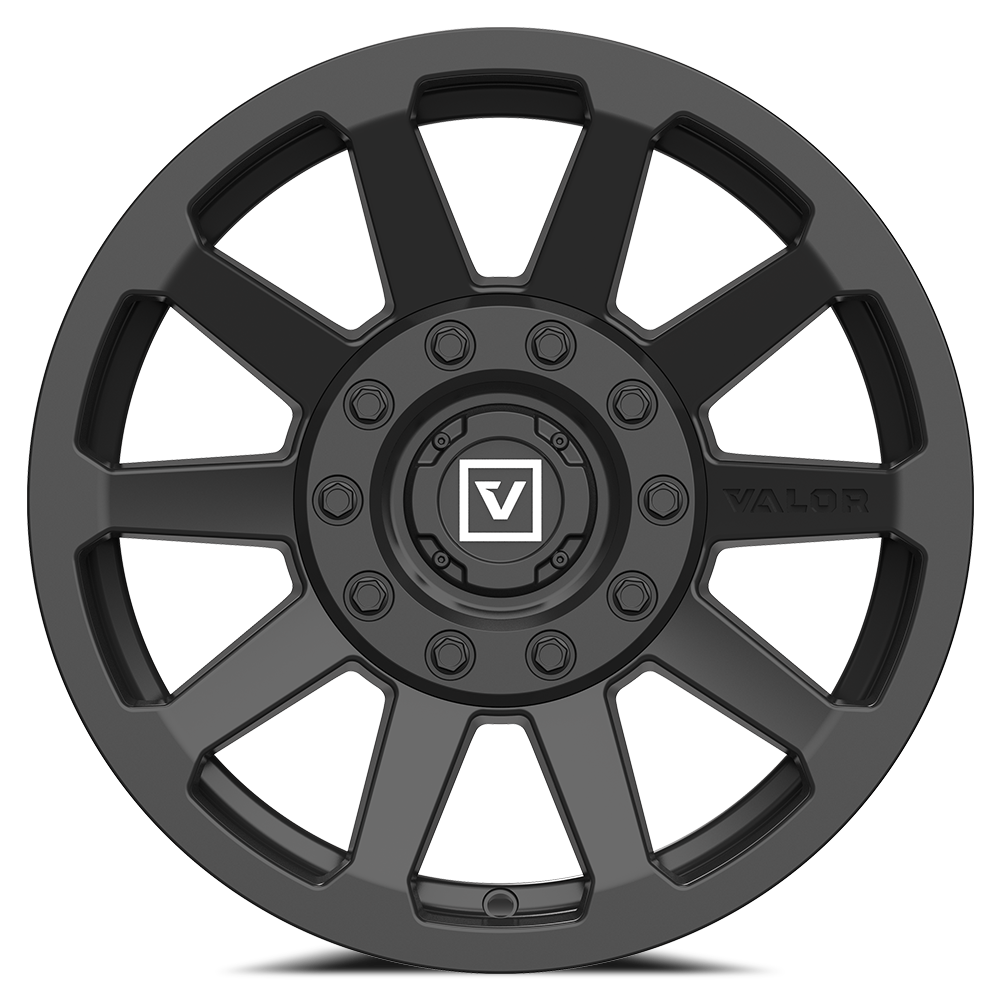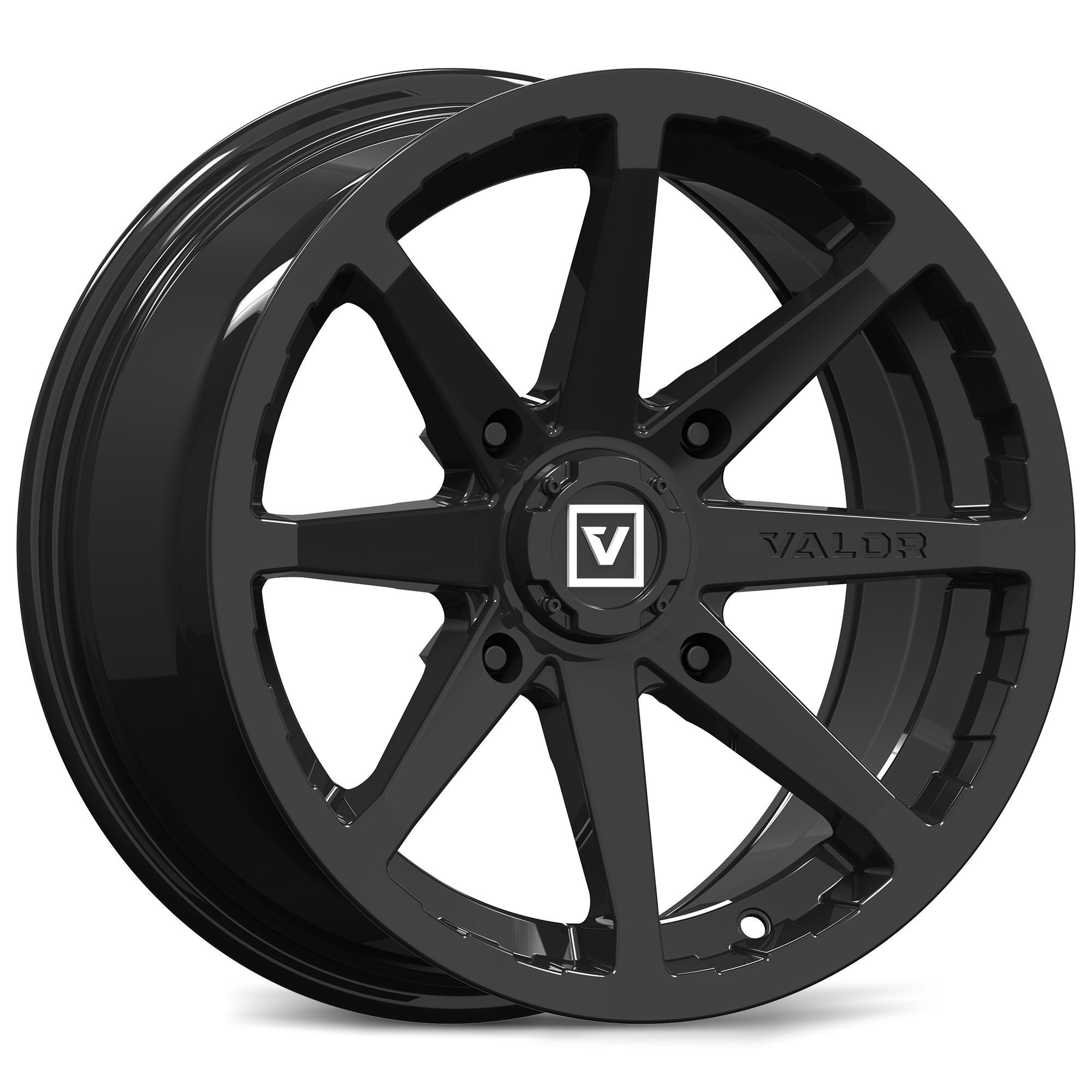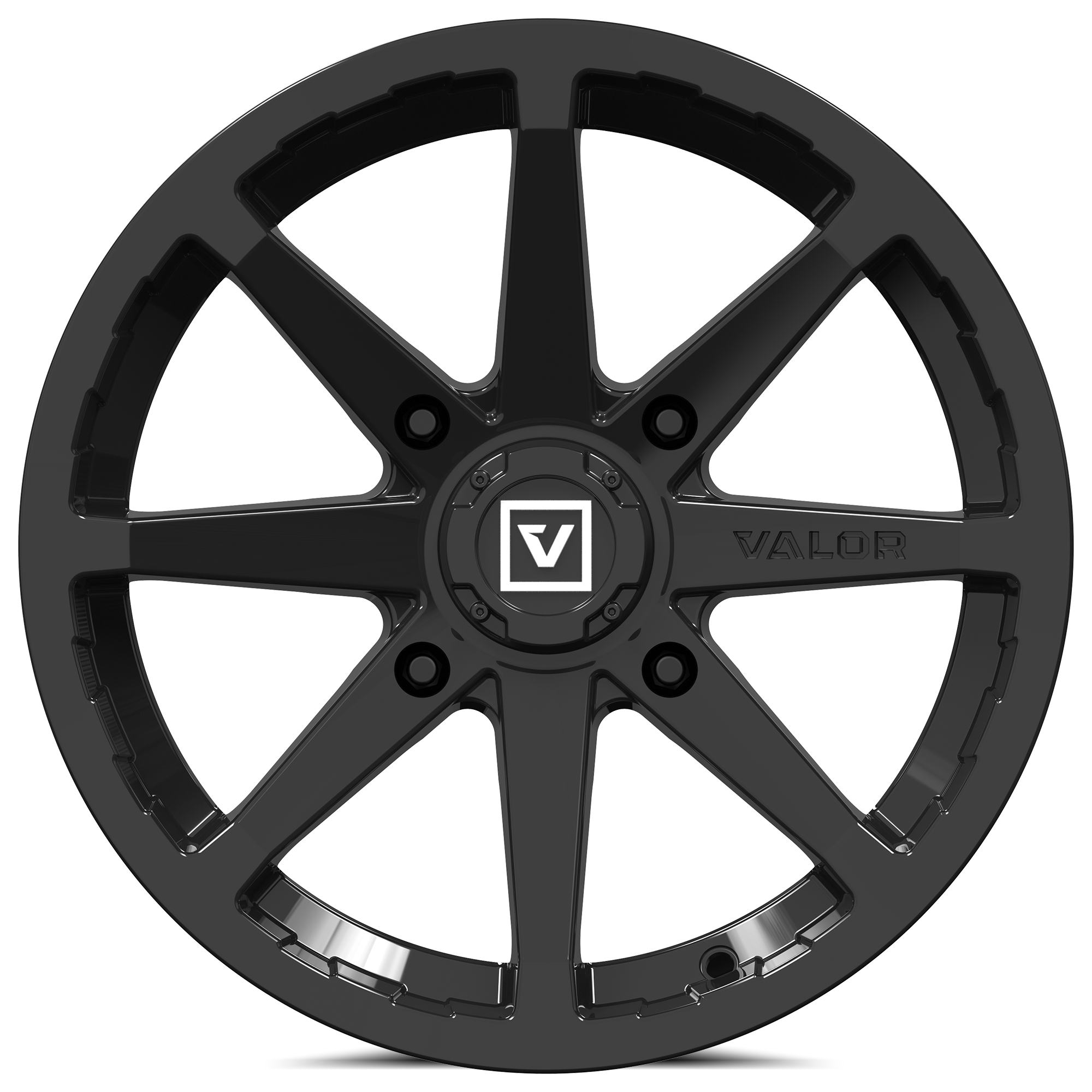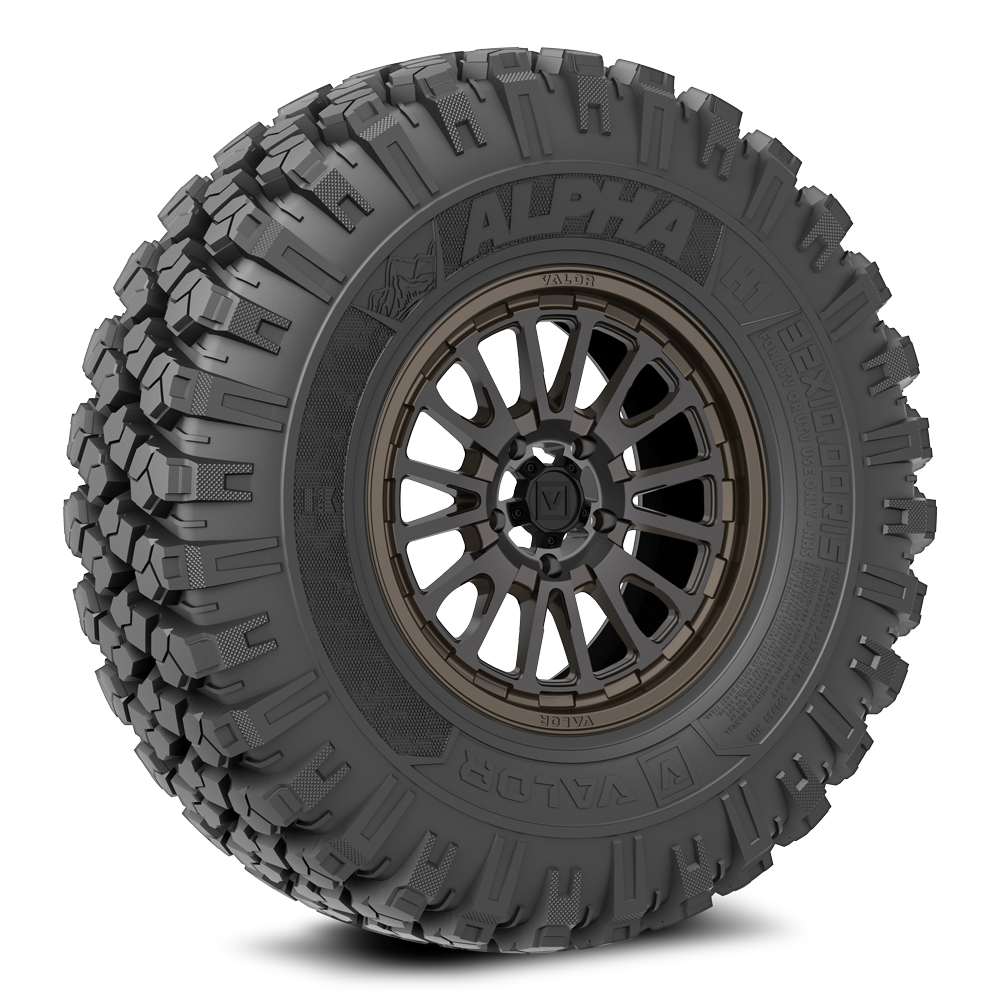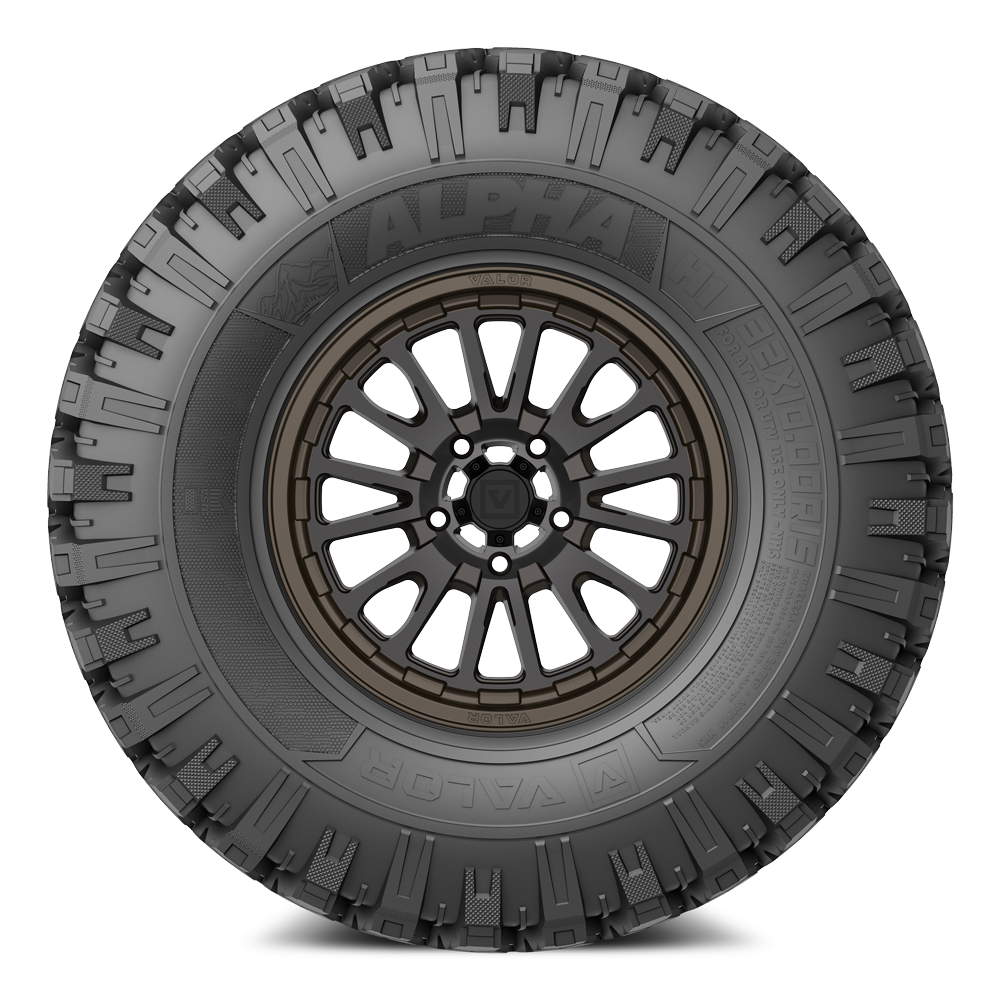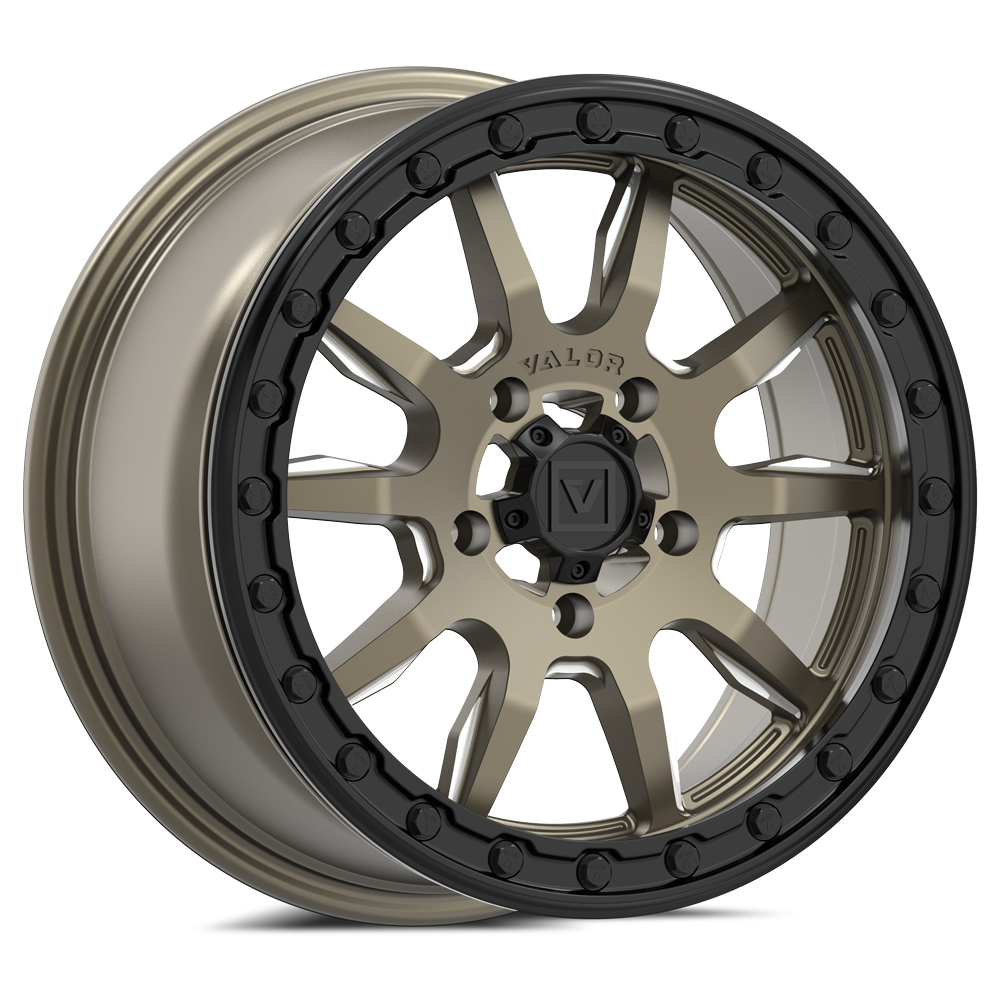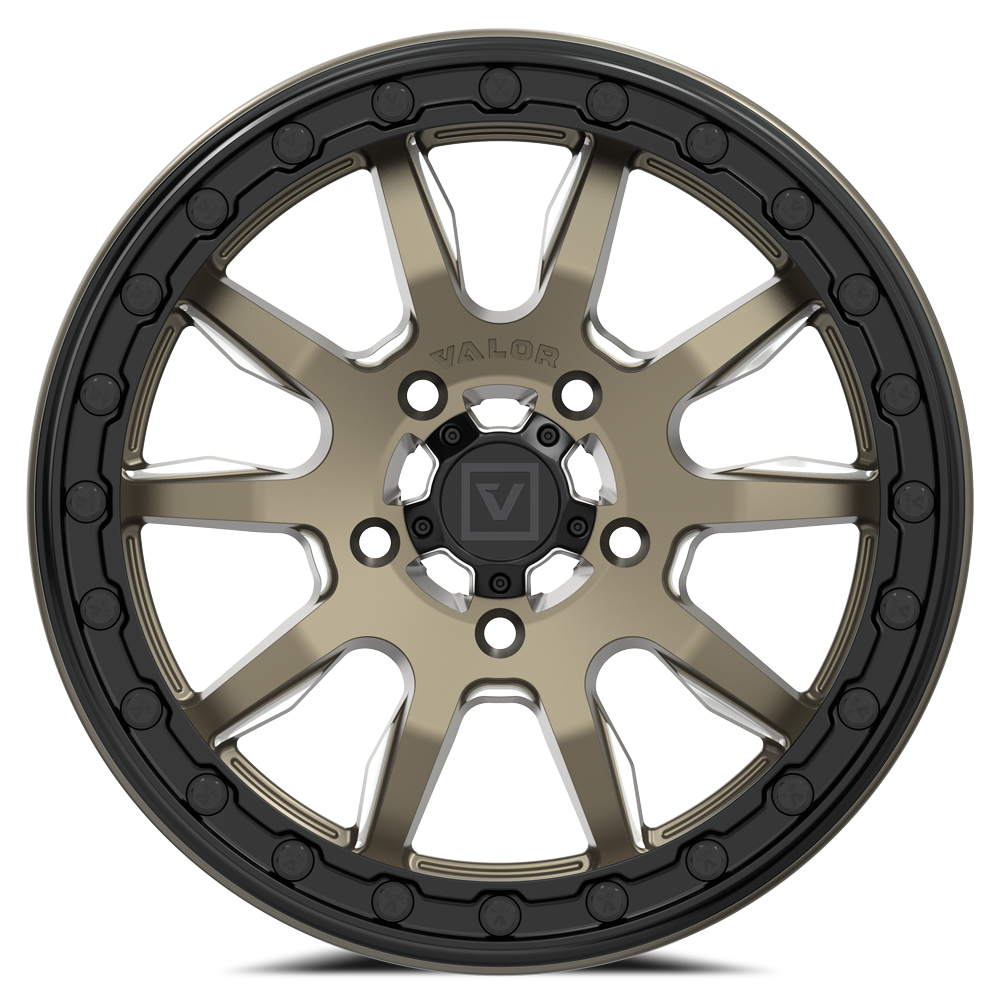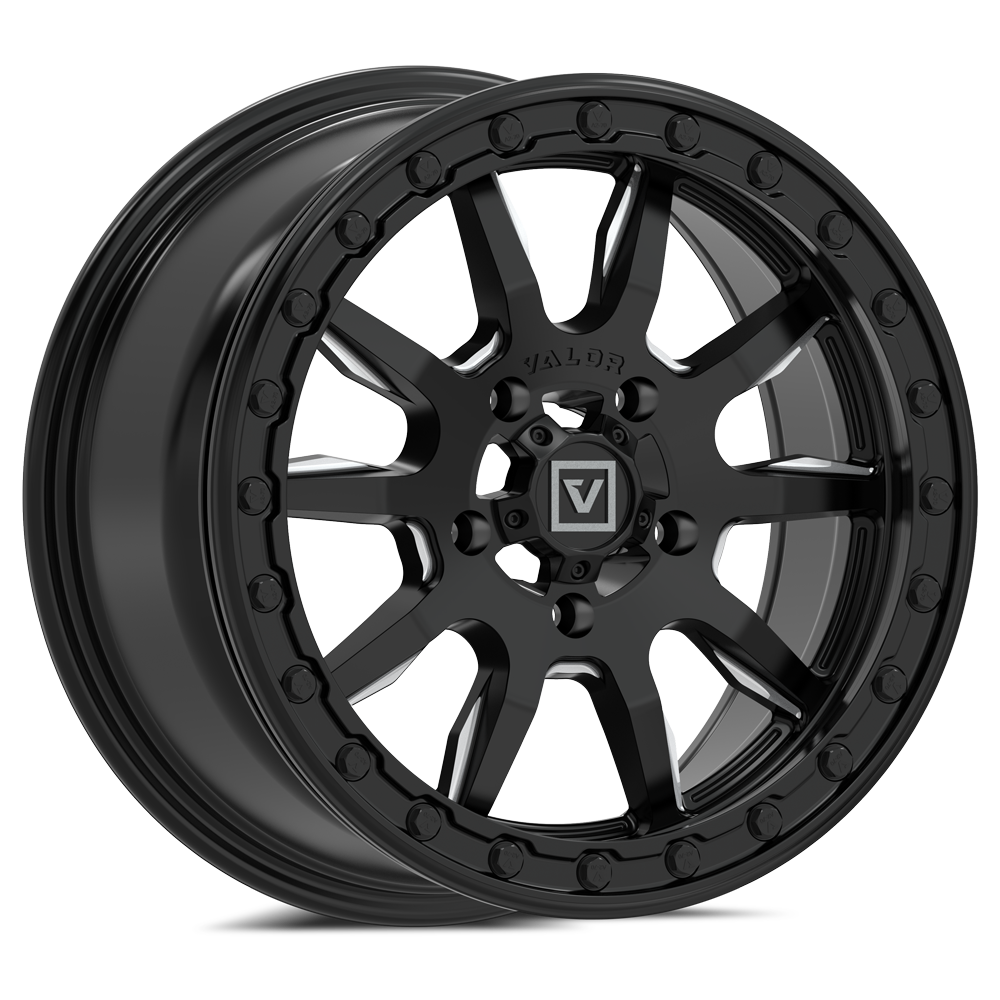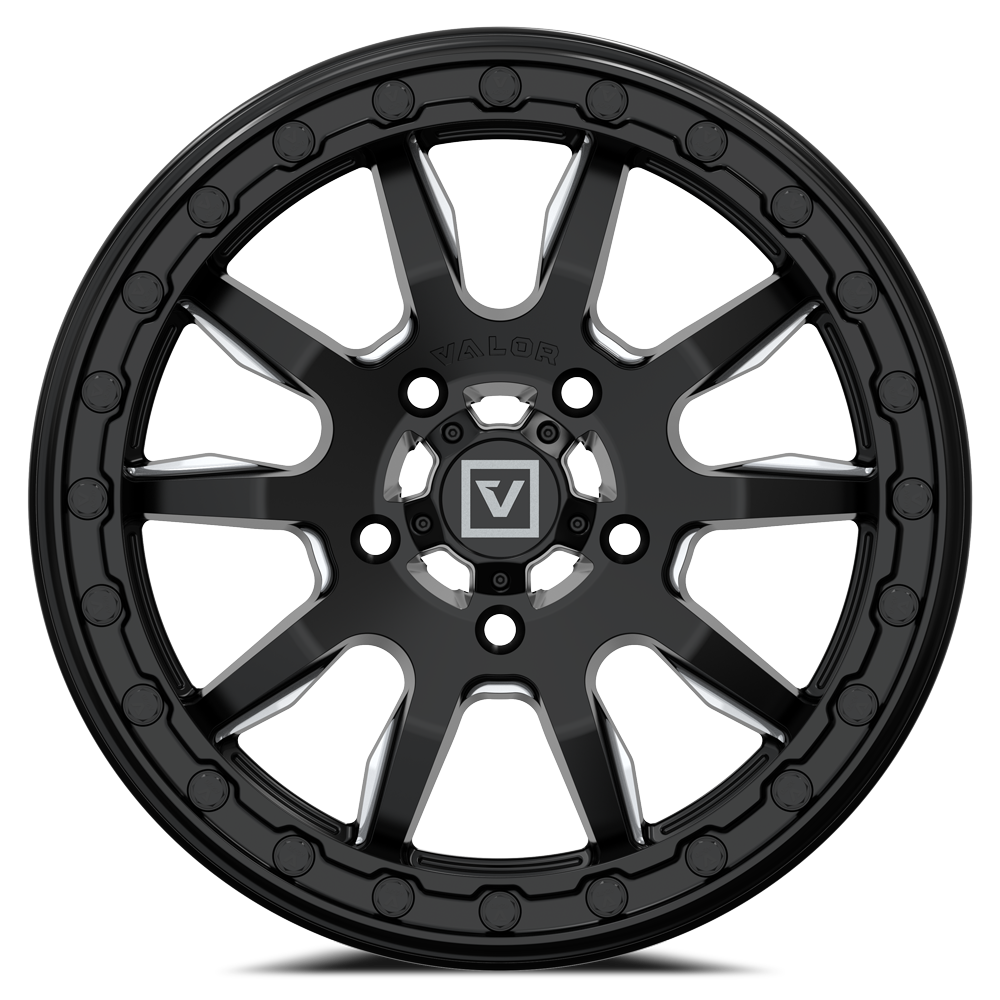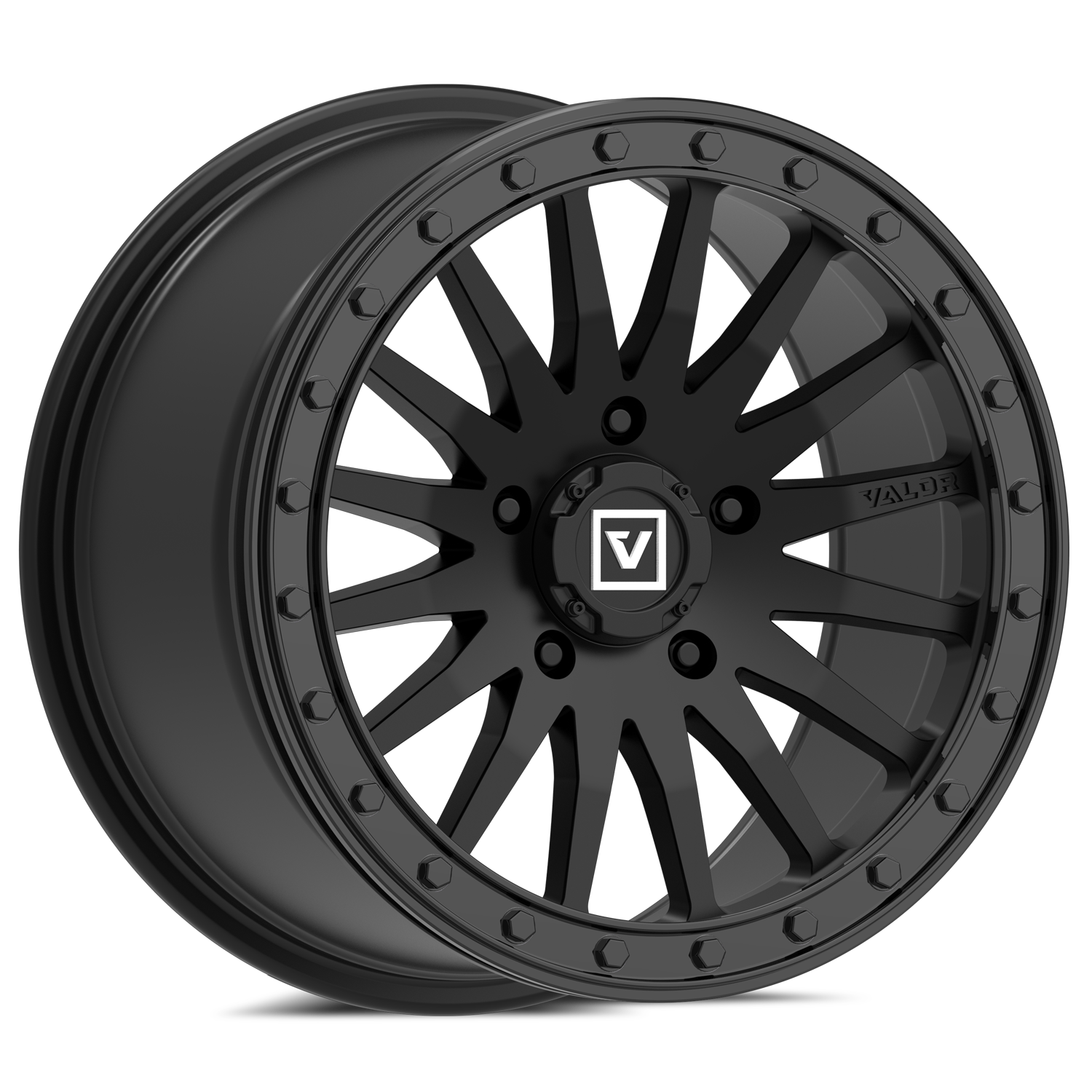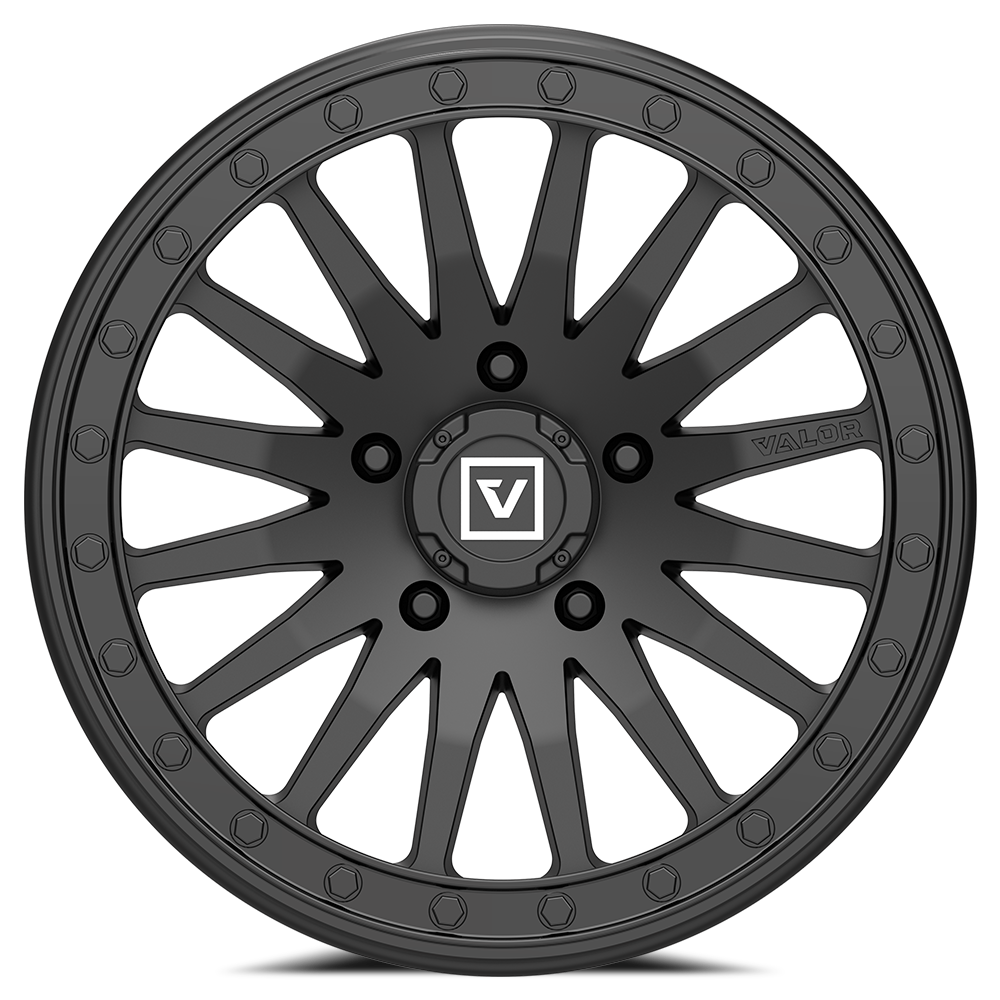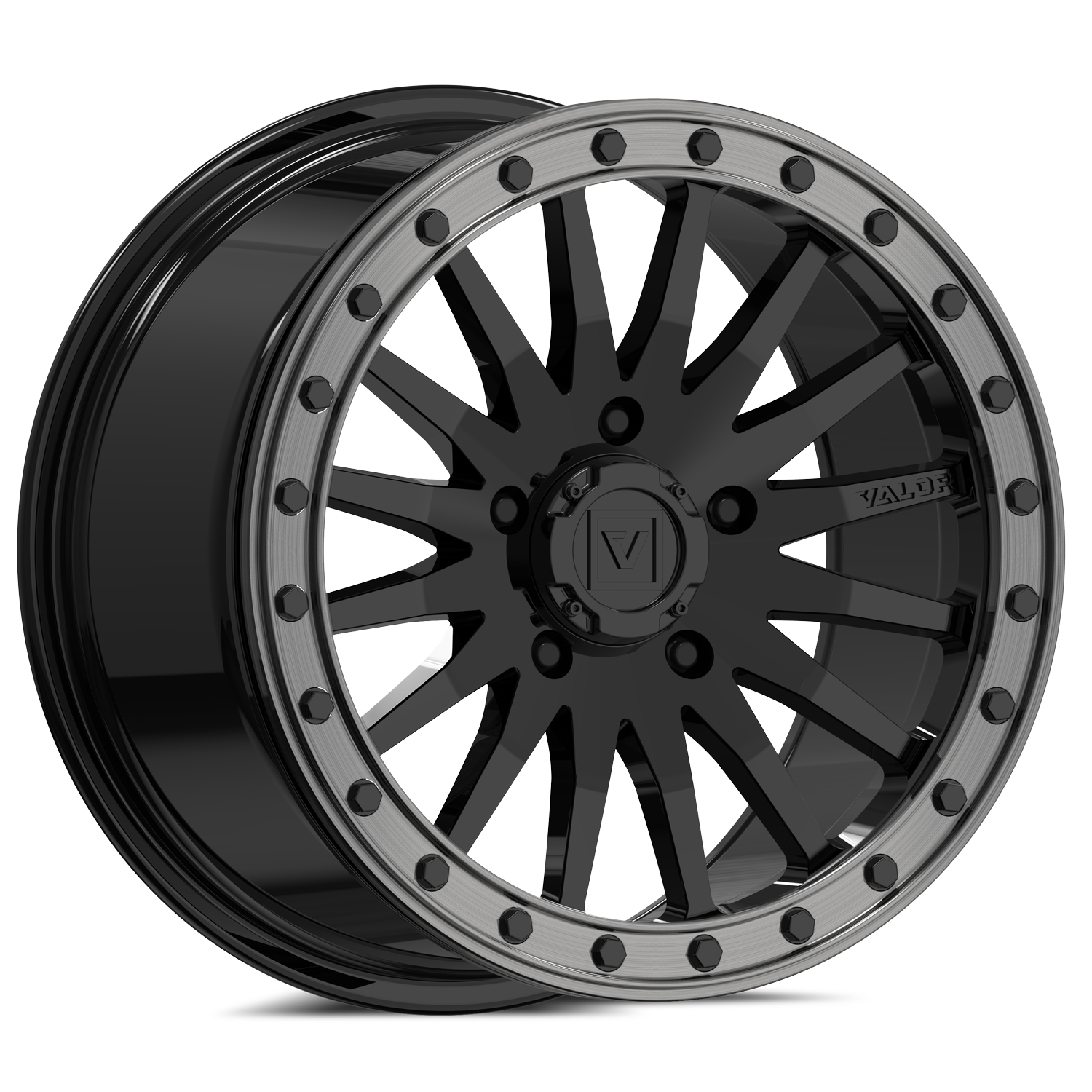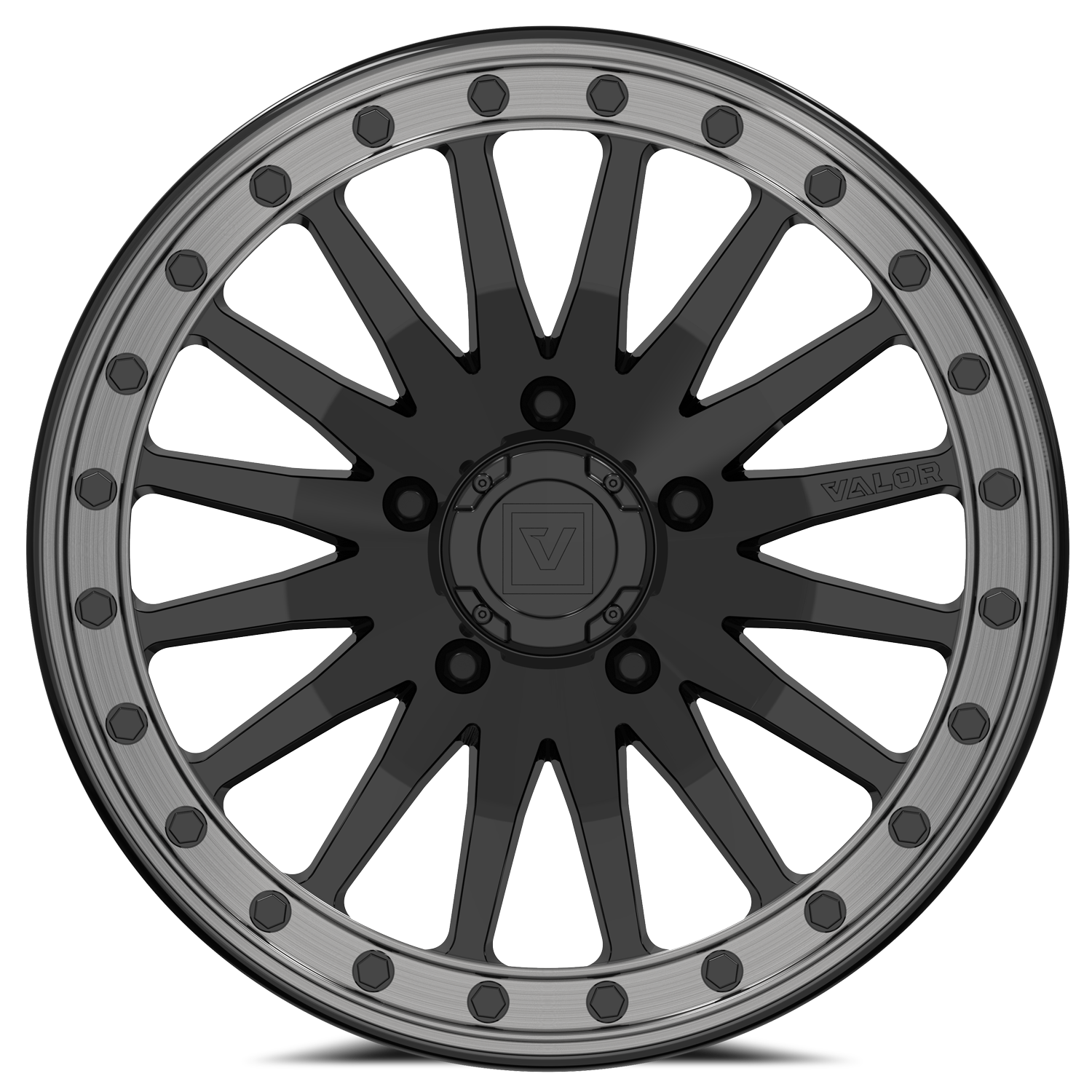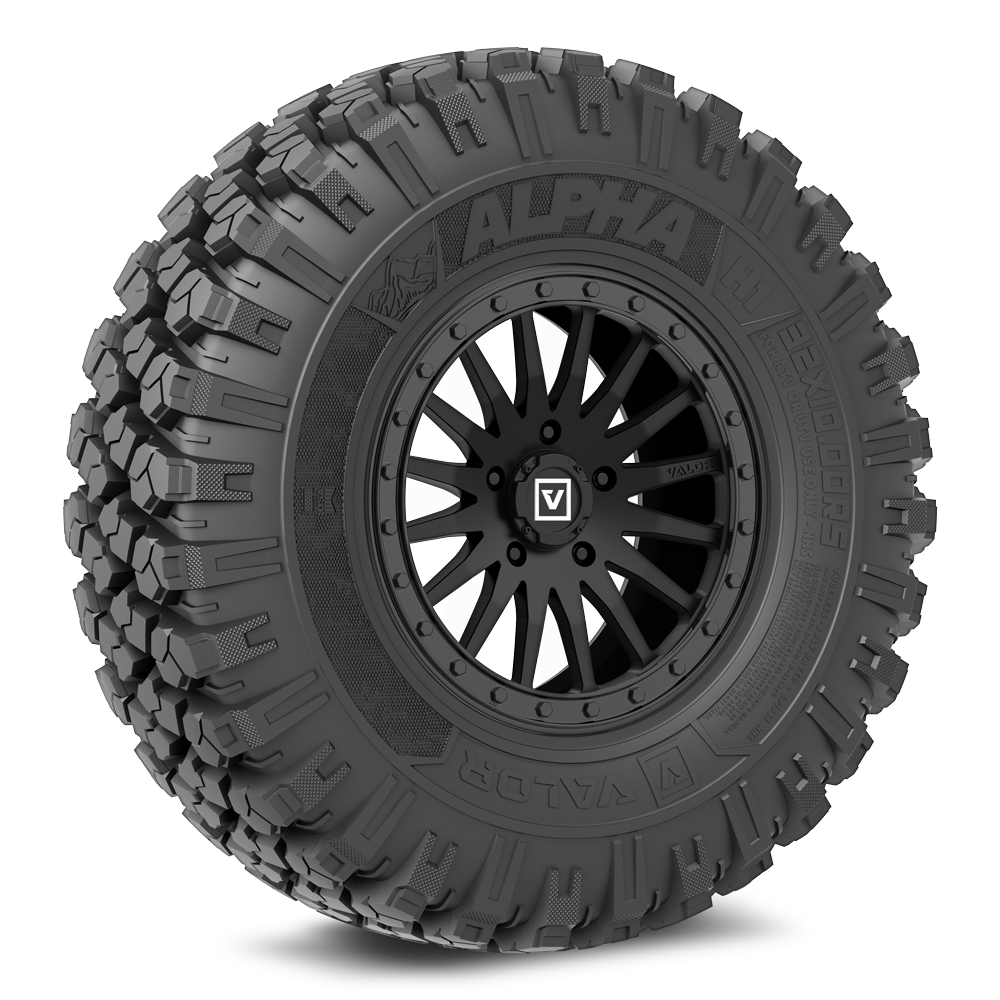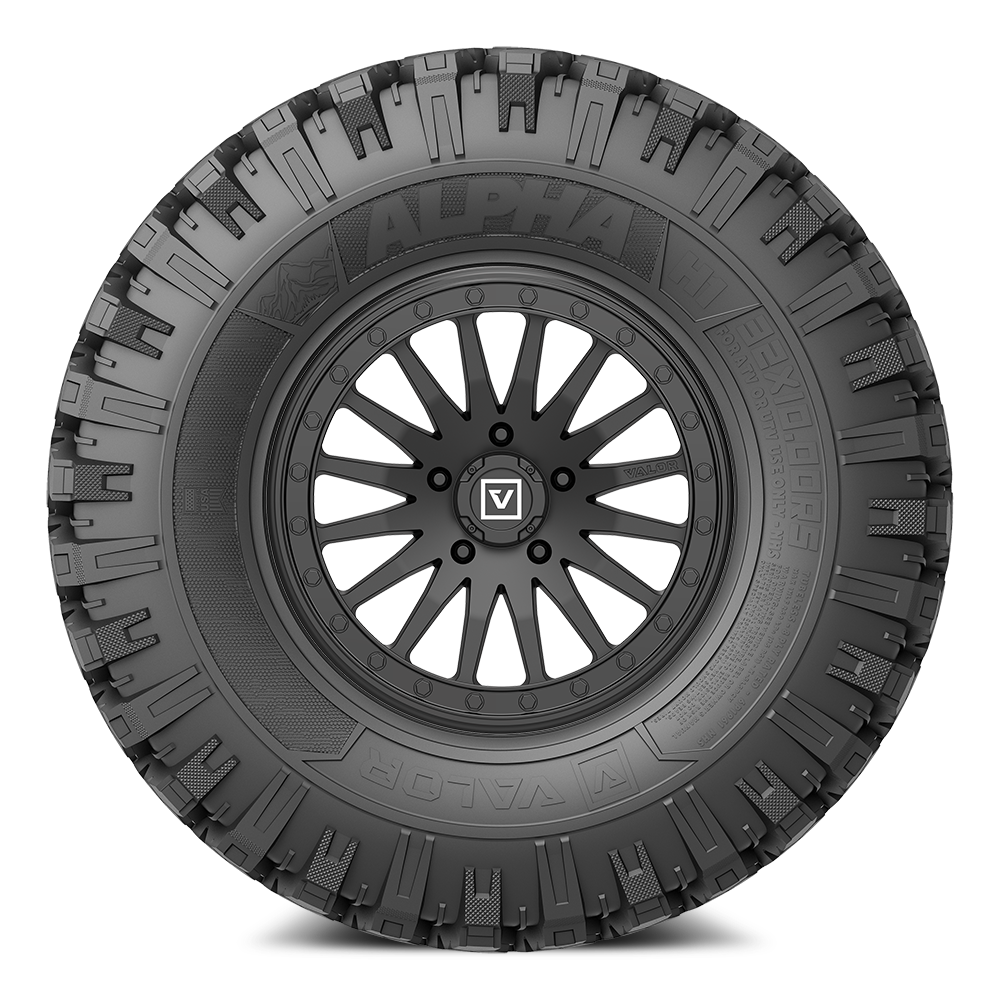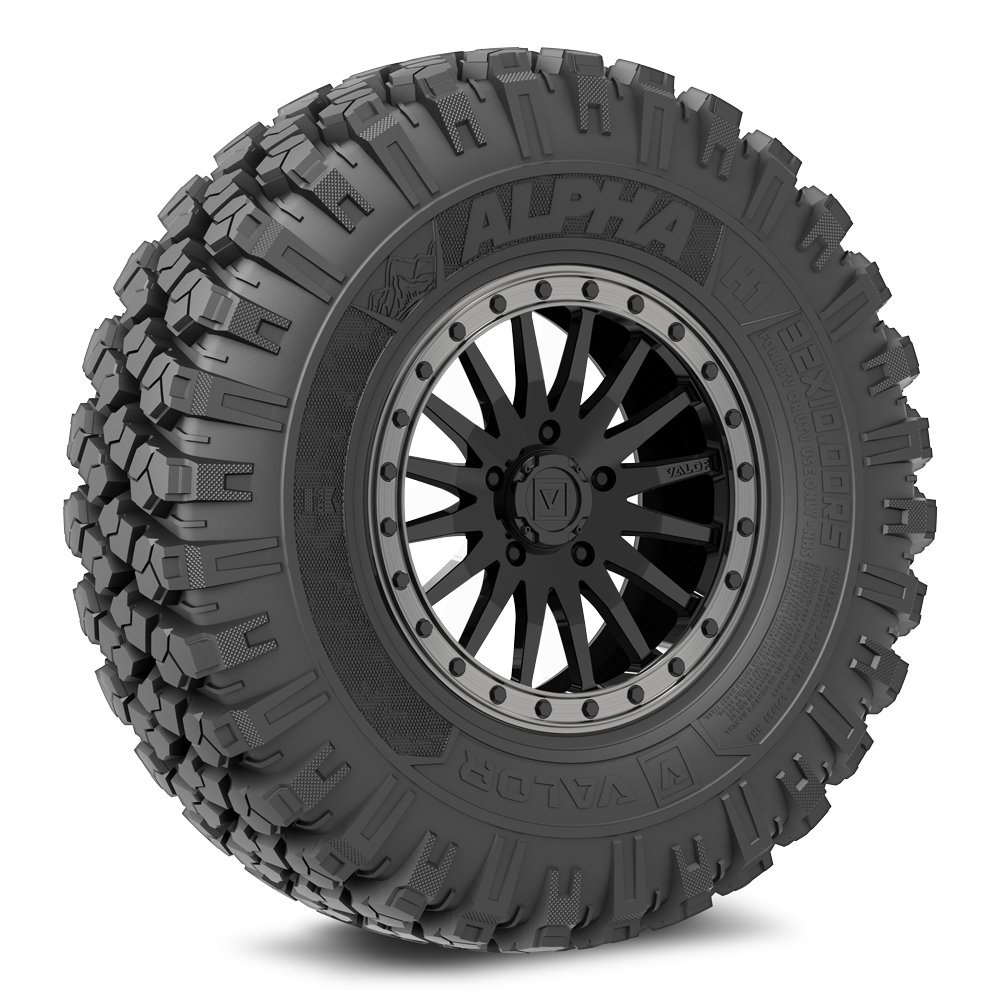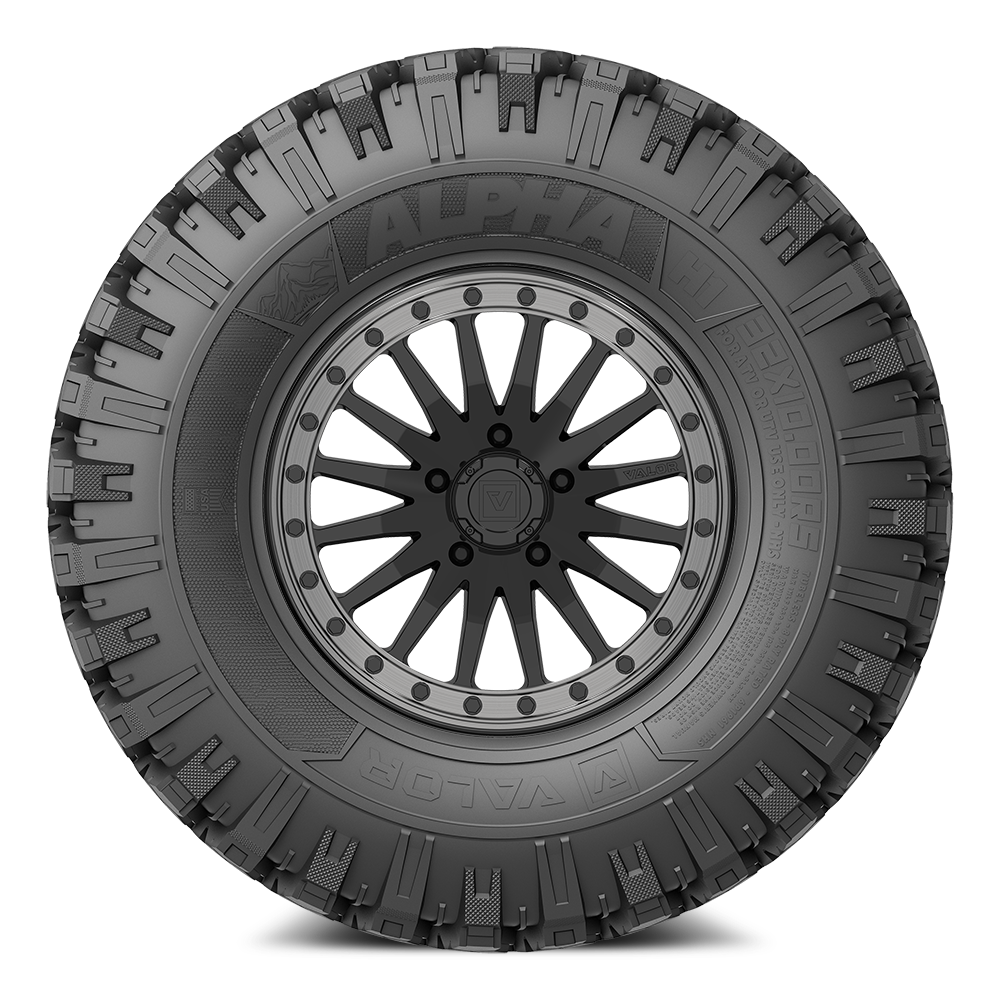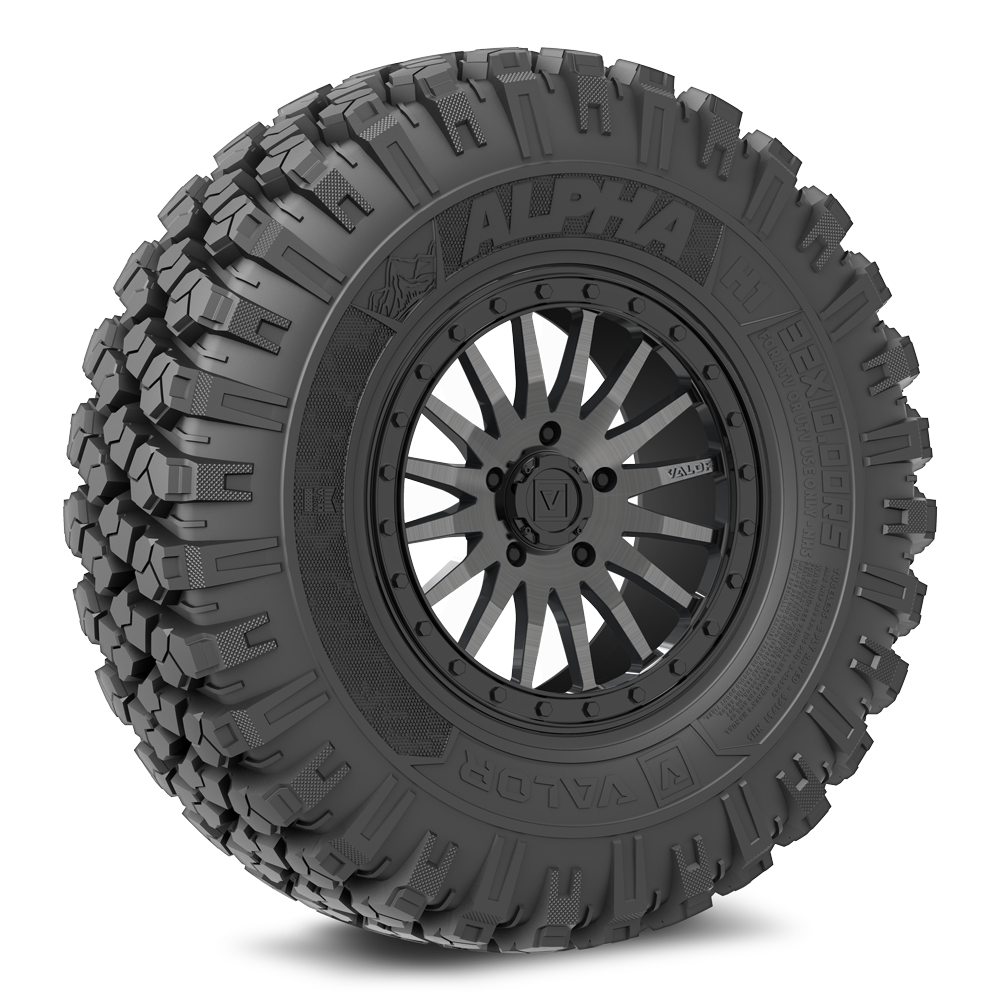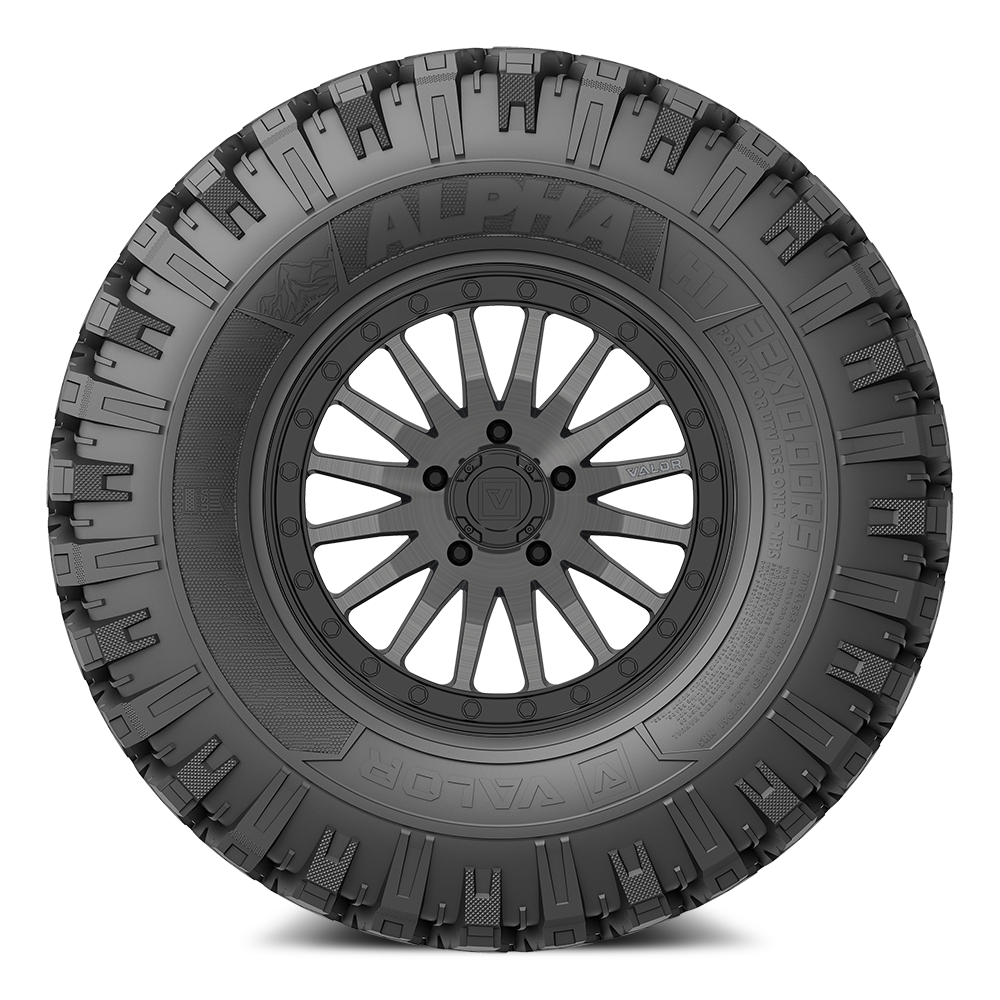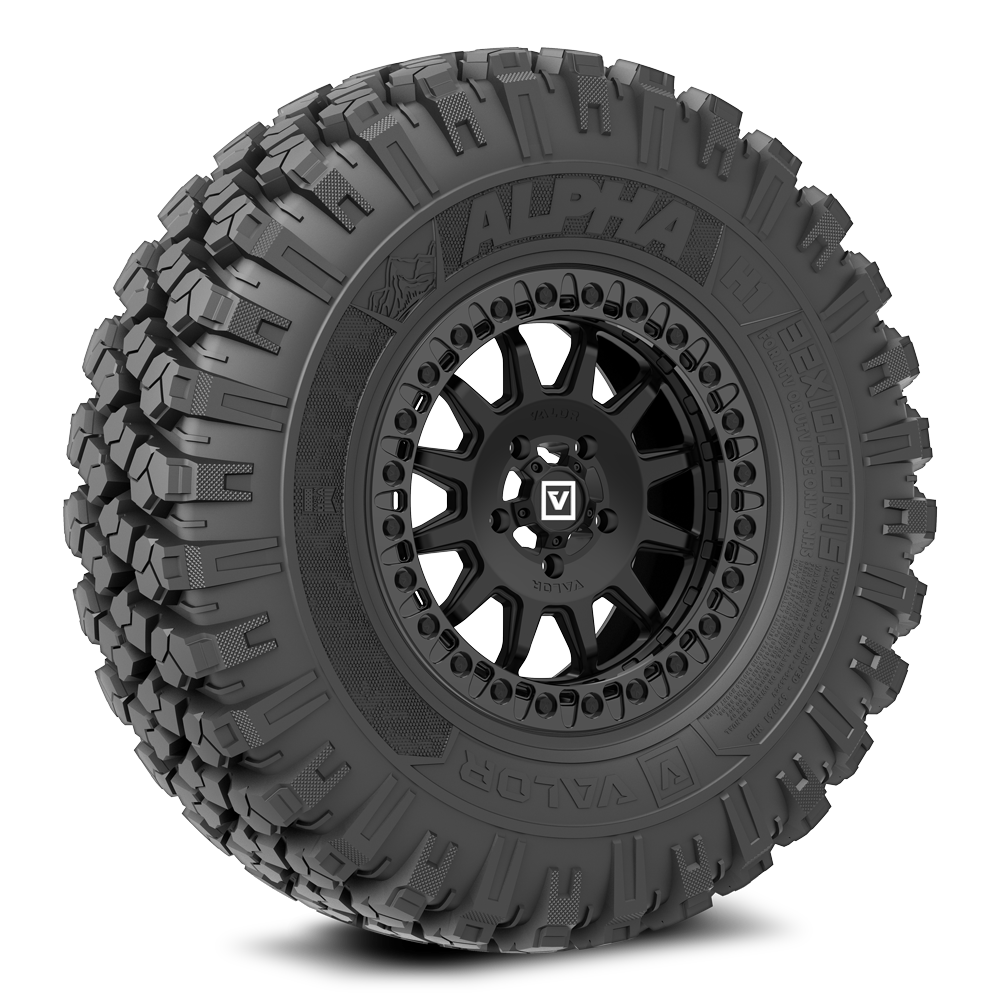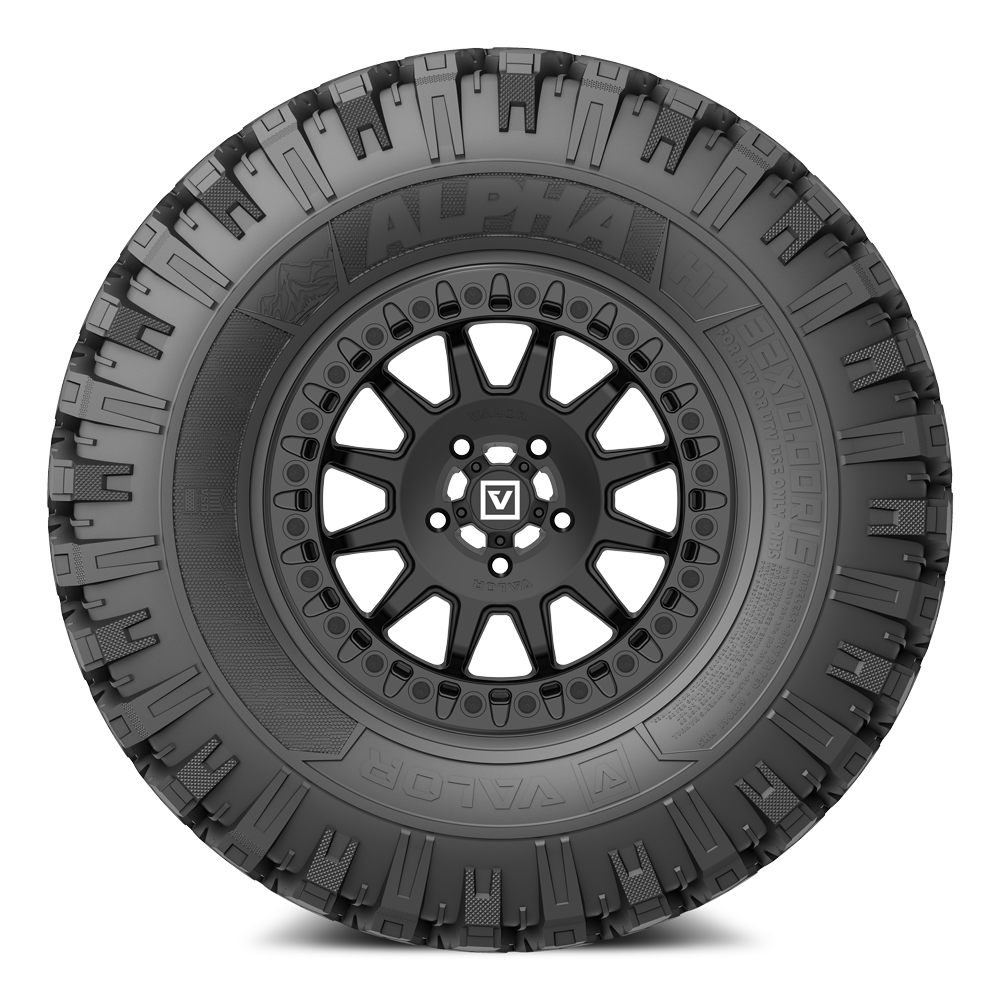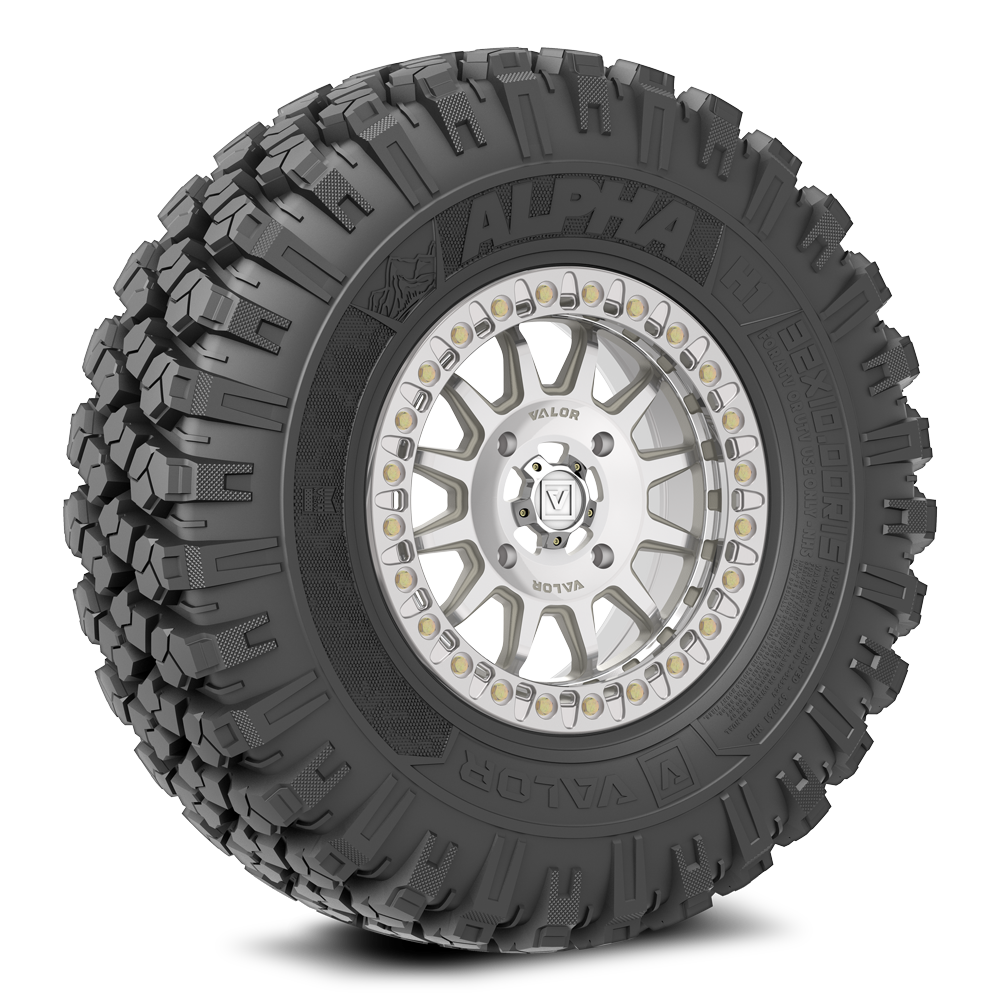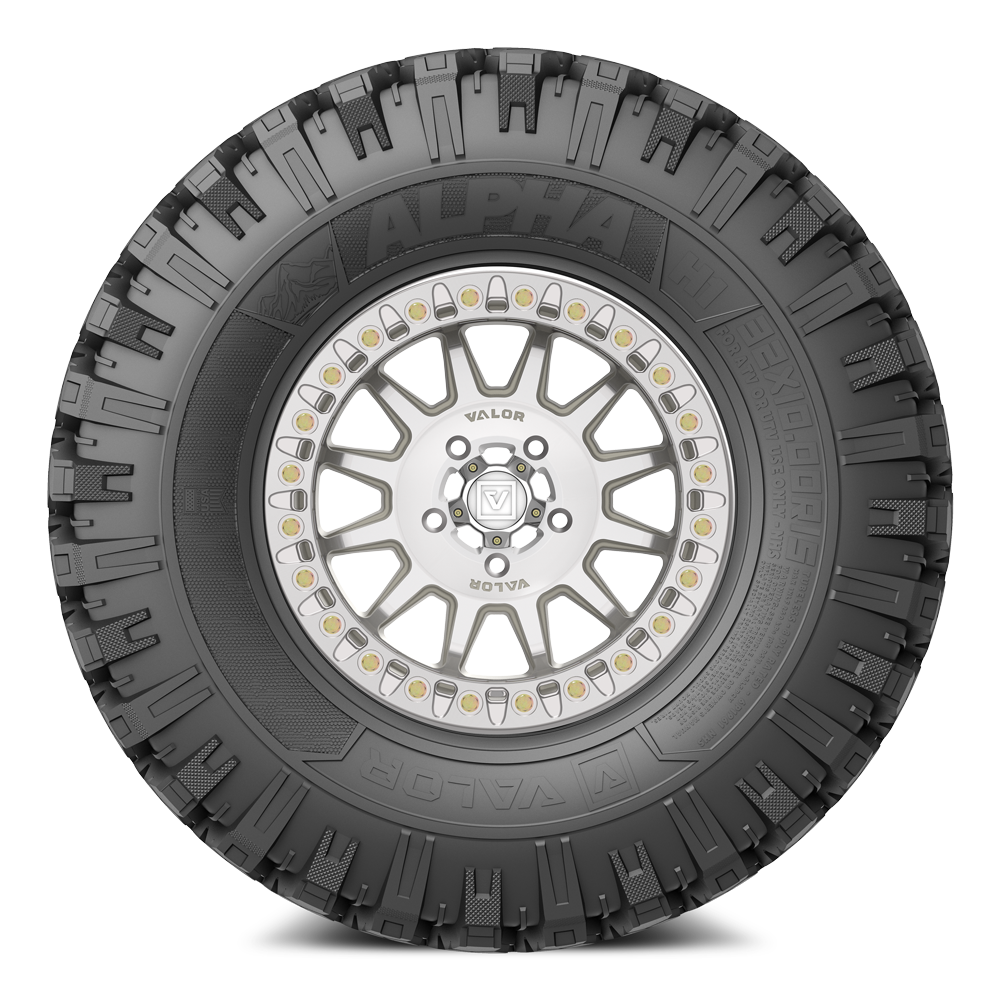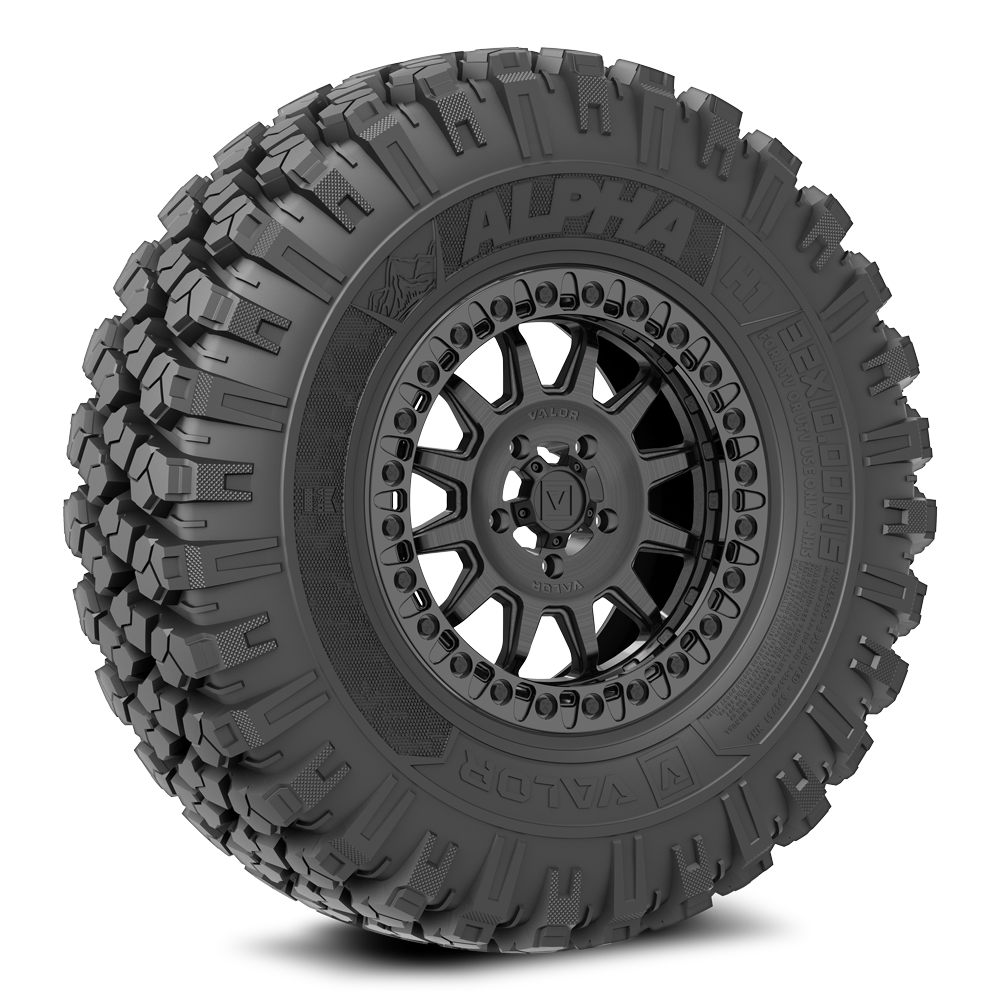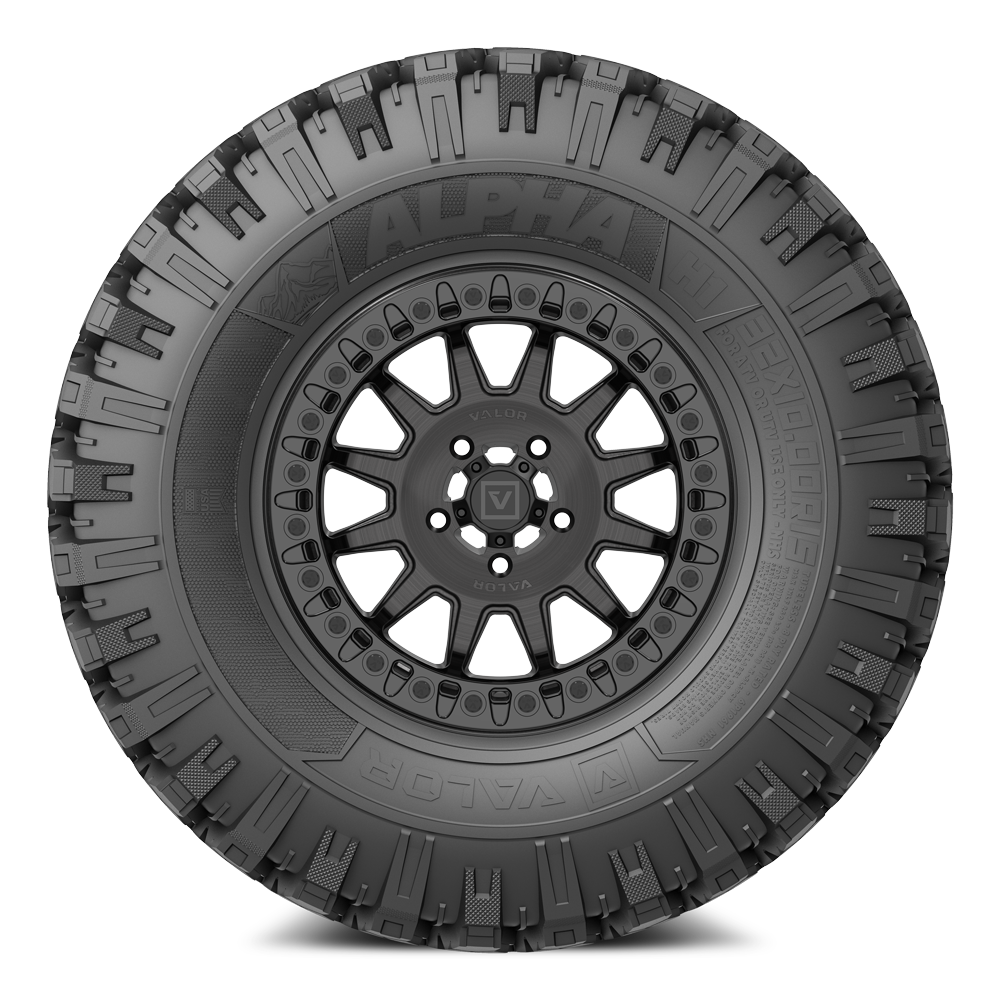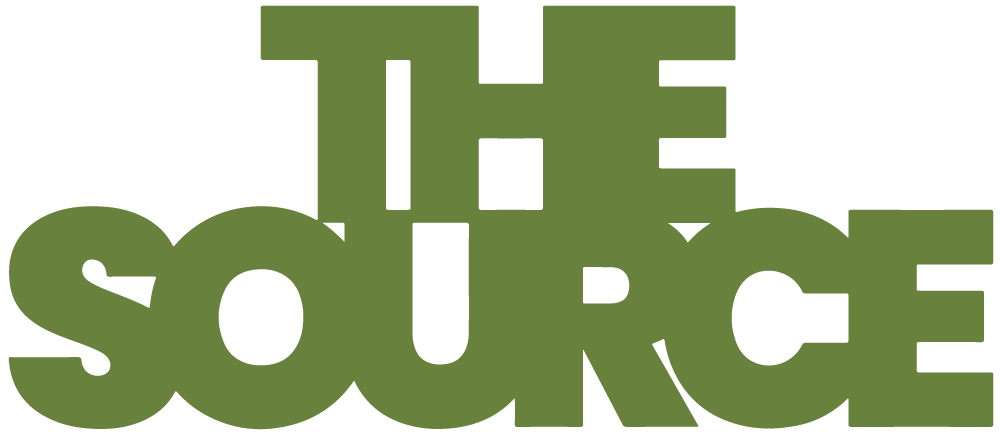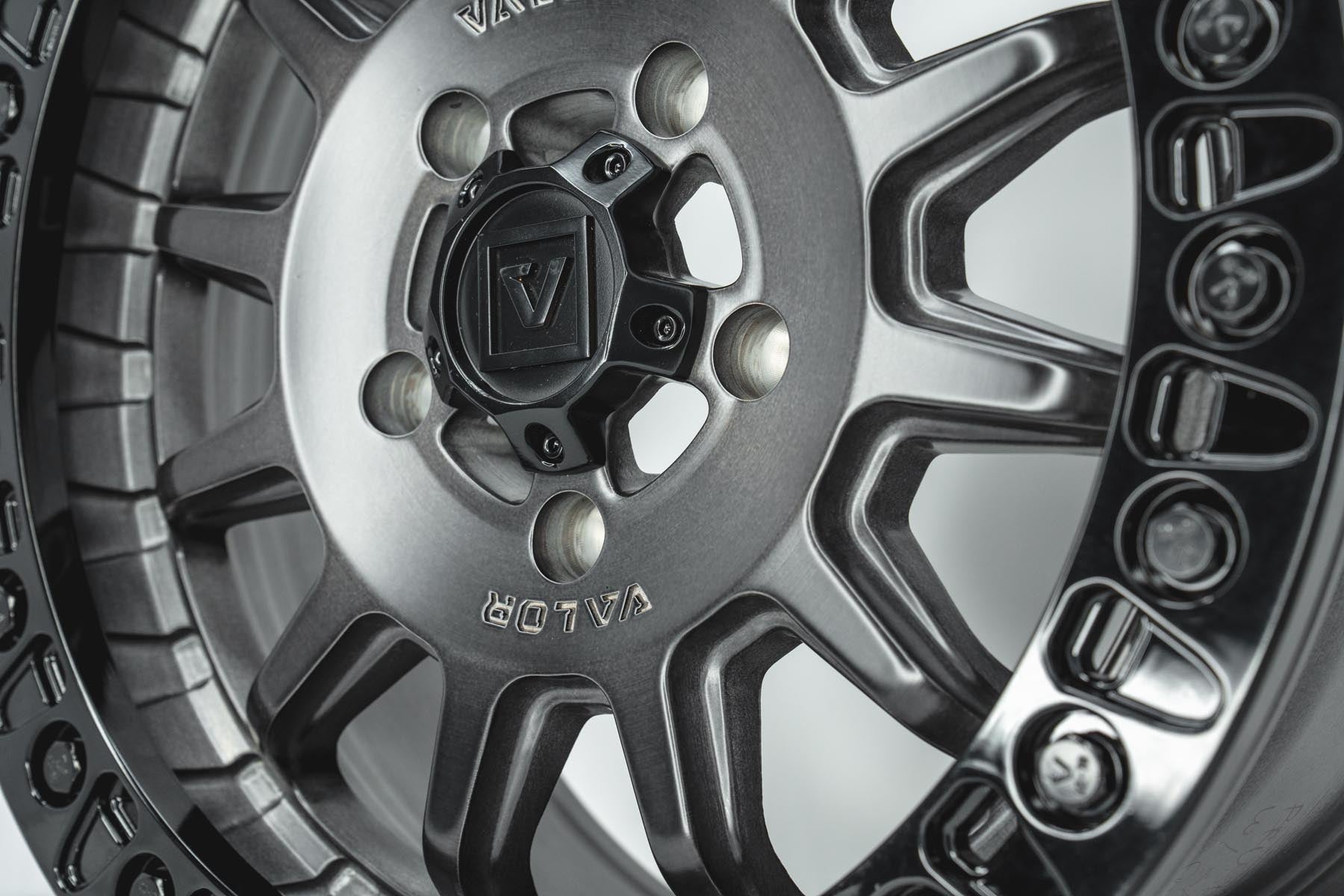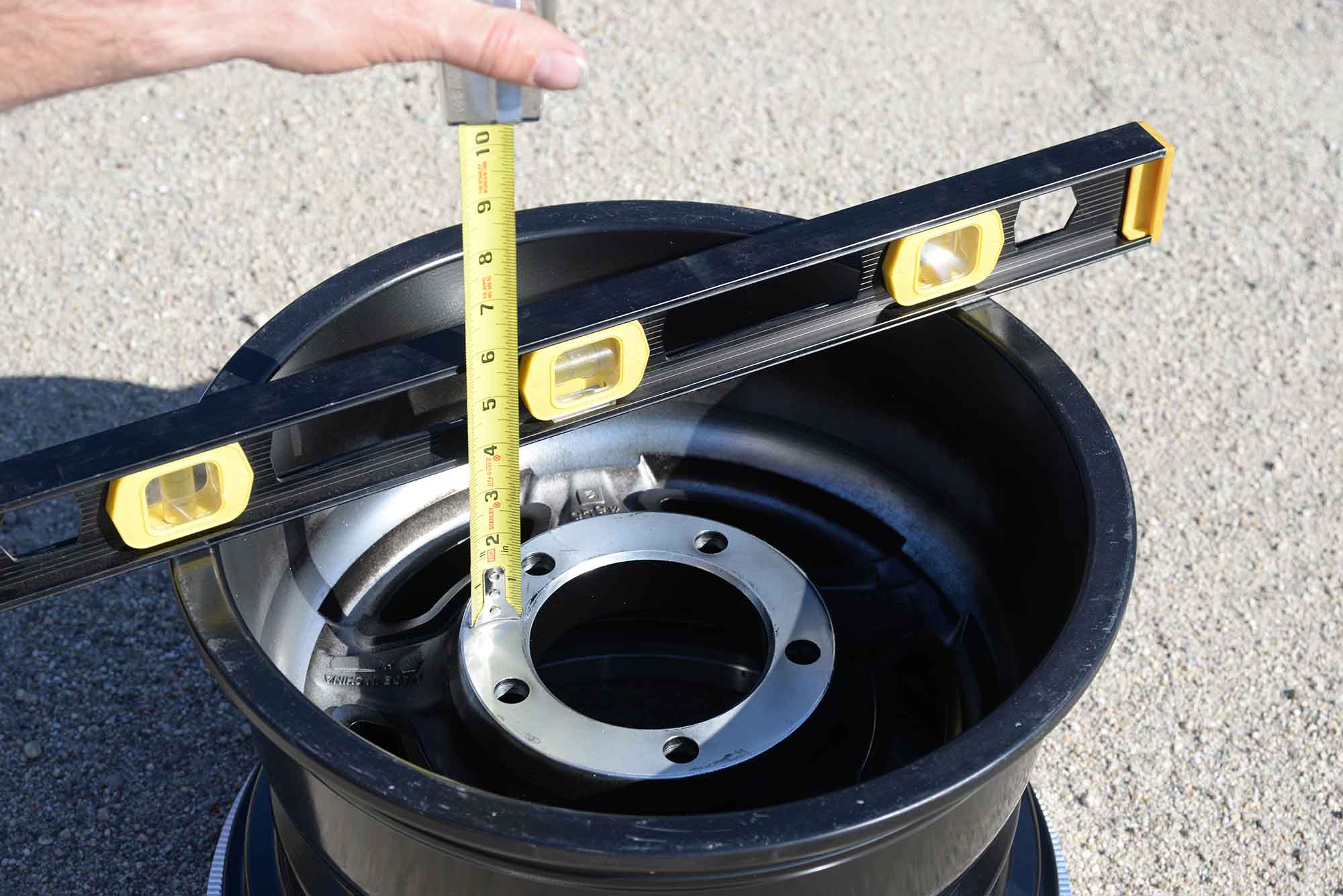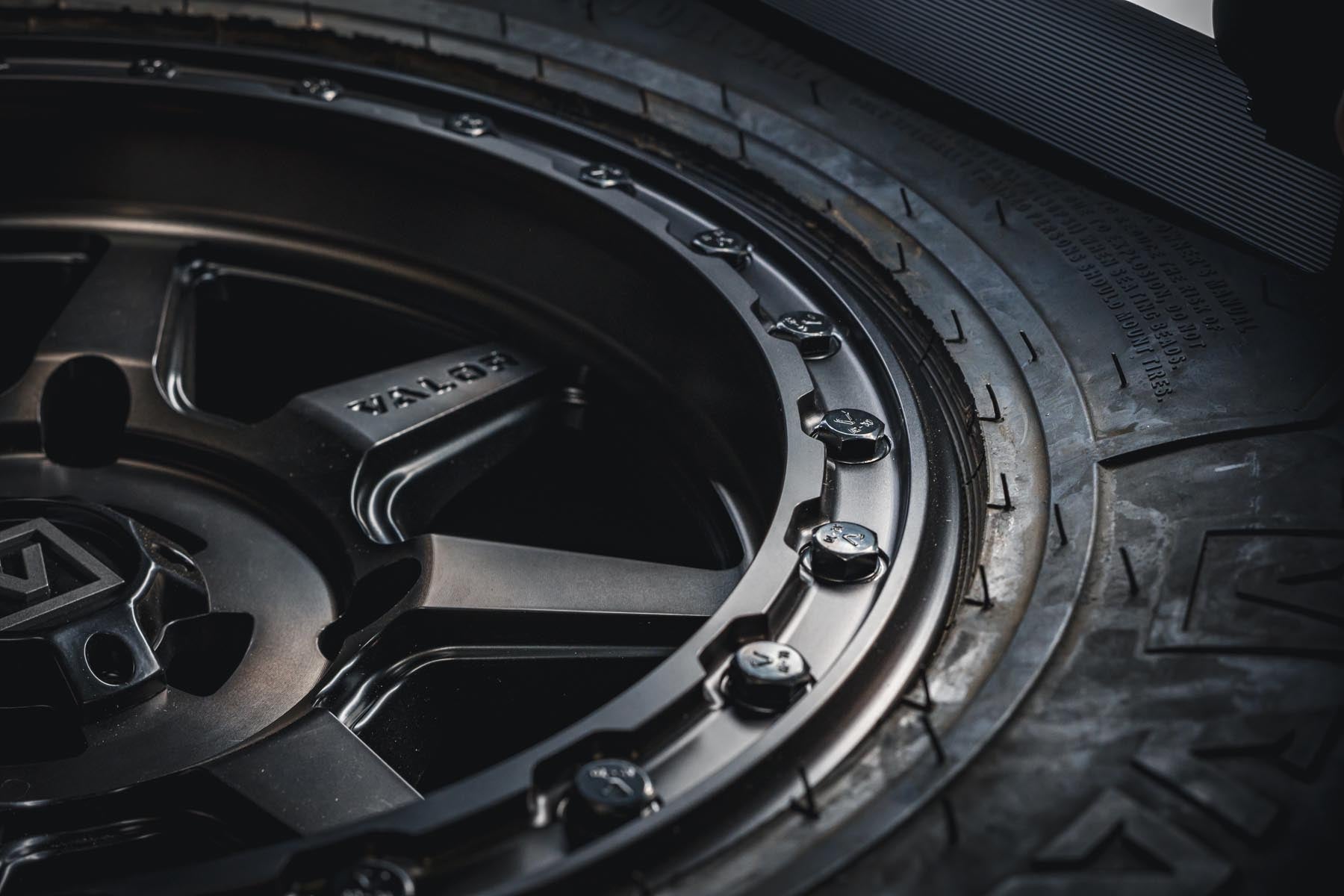The Basics:
Offset:
- Wheel offset is calculated by measuring the distance between the centerline and the hub mounting surface (back of the wheel face). It is measured in millimeters.
- Offset plays a big part in how a wheel looks. UTV wheels that have a low or negative offset often make the surface of the wheel more concave and, depending on how aggressive the wheel is, create a deep lip. Offset doesn't only affect how the wheel will fit on a vehicle but plays a major part in how the wheel is styled as well.
Backspacing:
- Instead of measuring from the centerline of the wheel, backspacing is the distance between the hub mounting surface and the backside of the wheel.
- Backspace is used when a less precise using inches as primary measurement while offset is very precise using millimeter measurement.
Correct offset/backspacing allows enough room for the suspension, brake, tires, and steering systems to operate without interference from the wheel. Below you'll find a bunch of numbers that correlate to how your utv wheels will mount on your vehicle's hub assembly. Depending on the offset/backspacing of the wheels you select, the wheels may push out past OEM width, remain stock, or possibly tuck under your fender. This movement of the wheel assembly is done exclusively by wheel offset/backspacing and without any other modifications to your suspension or vehicle.
Why is this important?
If you're like most brand new UTV customers, you're probably thinking you want to keep your suspension and vehicle width as close to stock. The thought is that your vehicle's manufacturer spent thousands of hours (and dollars) engineering the perfect geometry. Knowing your UTV's OEM offset will help you find aftermarket utv wheels that come as close to OEM fitment as possible.
Some of your may have bought a 64" wide base but want MORE width. In this case, you'd want a low offset wheel to push them out, improving your overall width without any additional cost other than new wheels.
Example: Polaris RZR Pro R

The Polaris RZR Pro R has a 74" width from the factory. Tinkering with your offset can adjust the overall vehicle width by several inches so if you're concerned about fitting a super wide machine like the Pro R in your new enclosed trailer, inches matter.

Polaris RZR Pro R has a 15x7 +62mm offset OEM wheel which translates to a 6.44" backspacing. You will hear people say this is a 6+1, which refers to 6" backspacing and 1" lip for a 7" total wheel width.
Stock 2024 RZR Pro R wheels: 15x7 61.85mm (or 6.44)
| EXAMPLE 1 | OFFSET | BACKSPACE |
| RZR Turbo R | +62mm | 6.44" |
| V09 UTV wheel | +40mm | 5.57" |
| DIFFERENCE | +22mm | 0.87" |
| EXAMPLE 2 | OFFSET | BACKSPACE |
| RZR Turbo S | +55mm | 6.17" |
| V03 UTV wheel | +25mm | 4.98" |
| DIFFERENCE | +30mm | 1.19" |
Looking at the examples of the Polaris RZR Turbo R and RZR Turbo S offsets and backspacing above, the Valor Offroad V09 UTV wheel would be considered a 5+2 and the Valor Offroad V03 UTV wheel would also be considered a 5+2, even though there is 30mm of difference between the two. You can quickly see why general backspacing isn't as specific as offset as most people generalize a 4.98+2.02 as a 5+2 AND a 5.57+1.43 backspacing also as a 5+2. Valor Offroad will always use the offset measurement as we feel this gives the end user an exact fitment measurement.
Let's look at some extreme visual examples below to give you a good overview of how backspacing can drastically change the fitment of your wheels/tires.

A negative offset (-47mm) has VERY deep wheel spokes that bend back from the lip edge creating a super deep dish styling. You'll commonly see this type of offset on sand machines who want to transfer power to the back wheels for better traction. On the other extreme end is a +50mm+ offset which is very close to OEM wheel spec. As you can see in the example above, a 50mm+ offset require a spoke design that have little to no depth, and are almost flush with the lip edge. The reason why your OEM utv wheels are pretty boring straight from the factory is because they have a VERY high offset which allows for little to no lip or spoke design/depth.

Backspacing is a general measurement that takes into consideration the available space you have behind the mounting pad of your wheels, hence why high offset utv wheels have a high backspace (6+1) and deep dish negative offsets have a low backspacing (1+6), first number being the space behind mounting area and second number being the available space in front of the mounting pad (think spoke design). An even easier example of this conversion would be a 7" wide wheel with a 3.5 inch backspacing. This would be the equivalent to a zero offset (+0mm) wheels since the mounting surface aligns with the centerline of the wheel
Want to keep things stock? Get as high of an offset as you can on your new aftermarket wheels. Do you need to match OEM spec? Absolutely not.
7" WIDE SPECS
|
OFFSET |
WIDTH GAIN |
| 6+1 / +55mm | 0.0-1.5" wider per side over stock |
| 5+2 / +35mm | 1.0-1.5" wider per side over stock |
| 4+3 / +15mm | 1.5-2.0" wider per side over stock |
| 3.5+3.5 / +0mm | 1.5-2.5" wider per side over stock |
| 2+5 / -47mm | 4"+ wider per side over stock |
8" WIDE SPECS
|
OFFSET |
WIDTH GAIN |
| 6+2 / +40mm | 1.0-1.5" wider per side over stock |
Valor Offroad UTV Wheel Backspacing Conversion Chart
| STYLE |
|
|
| V01 15x7 | +15mm | 4.59 (4+3) |
| V02 15x7 | +20mm | 4.79 (4+3) |
| V03 15x7 | +25mm | 4.98 (5+2) |
| V03 15x10 | +0mm | 5.50 (5+5) |
| V03 14x7 | -32mm | 2.74 (2+5) |
| V04 15x7 | +15mm | 4.59 (4+3) |
| V05 15x7 | +35mm | 5.38 (5+2) |
| V06 15x8 | +40mm | 6.07 (6+2) |
| V06 15x10 | +25mm | 4.52 (4+6) |
| V07 15x7 | +25mm | 4.98 (5+2) |
| V08 15x7 | +30mm | 5.18 (5+2) |
| V09 15x7 | +40mm | 5.57 (5+2) |
| V09 17x8 | +40mm | 6.07 (6+2) |
| V13 15x7 | +10mm | 4.39 (4+3) |
| V14 14x7 | +20mm | 4.79 (4+3) |
| V14 15x7 | +20mm | 4.79 (4+3) |
| V15 15x7 | +45mm | 5.77 (5+2) |
Why do we have two measurements for the same thing?
This is the biggest gripe with new UTV and ATV owners. If offset and backspacing both give you basically the same information, why do we have two version? Offset is the automotive industry standard and the powersports industry has adopted backspacing. If you come from an automotive background, more than likely you're used to offset, hence why we see both.
Need to find out what Valor Offroad products fit your specific vehicle? Check out our Fitment Guide.

